Imagine traveling to not one, or two— but THREE amazing spots on the globe! This was a true Trifecta! Just back from a cruise to Bora Bora, Easter Island and Machu Picchu we covered three very special “bucket list” meccas. It just doesn’t get much better than this! I hope you enjoy following along, and for those of you who might take such a trip to Machu Picchu, I have offered some suggestions of how I would do it— had I known, what I know now. There are always some lessons learned when we travel!Our cruise began in Papetee, Tahiti a French Polynesian island. This is the largest island among the Society Islands, and is abuzz with port and airplane activity from around the world. Most guests arrive here and then depart for the outer islands, and Tahiti is the landing zone for provisions arriving from Australia/New Zealand via cargo ship. They are then dispersed to the outer islands. We stayed overnight at the Hotel InterContinental just south of the airport. It showed some wear and tear, but the grounds were lush, and the lobby opened to an expansive view of the ocean, with a free-formed pool and protected marine snorkeling area. The following day we set out with a long list of “things to see” —-with eight hours to kill. However, the weather was very warm, and the sites were just not that appealing. Some guests had arrived earlier and had arranged for tours outside of the city, but for those of us in town, it was not a place I wanted to be. Most visitors, I later learned, fly in and quickly head to Moorea or Bora Bora. Good plan, but we had a ship to catch.
Setting Sail….
We boarded one of our favorite ships, The Marina, of the Oceania Cruise Line which accommodates approximately 1,200 passengers. We enjoy the great service, the myriad of restaurant choices, resort casual attire, efficiency of the crew, and on this ship, they have a Bon Appetite Culinary Center, so I was able to arrange cooking classes for our numerous “at sea” days. But more on that later…
Huahine
Our first stop was Huahine (Hoo-A-He-Nee). This is actually two islands with a bridge connecting them. In 1769, Captain Cook had named the island Hermosa (meaning “beautiful” in Spanish), however it was later change to Huahine which related to the profile of the mountain in the shape of a pregnant woman lying down on her back. The folklore is endless, and the harvests are plentiful —-vanilla, melons, and bananas. This island has the oldest recorded date of human occupation among the Society Islands. Recently uncovered sites dating from 850 to 1200 CE, included ancient workshops for the construction of canoes and assembly of fish hooks. We enjoyed a half-day guided tour by jeep around the island. We visited a bay with an innovative fishing technique: rectangular rock structures were built in the shallow water. As the high tide came in, the water would fill the holes, and as the water receded, it would leave fish inside the “container.” We also visited a stream of sacred eels with blue eyes and explored ancient sites used for religious ceremonies along the coast.
1) Bora Bora
This is such a spectacular island, the topography is unmistakable once you have had the pleasure to be here. The island is located about 230 km northwest of Papeete, and is surrounded by a lagoon and a barrier reef. In the center of the island are the remains of an extinct volcano creating two peaks, Mount Pahia and Mount Otemanu. The island is only 20 miles around, and the port (or cove) bows as the base of a tall mountain range with azure blue water of every shade lapping at the dock and sandy beaches. The large bay is the center of an ancient volcano, and thus the round shape. There are Motu’s (coral reef islands that were formed 5 million years ago) that are just spectacular —rising from the water and dotting the coastline. There is a small airport along the north edge that conveniently brings visitors to Bora Bora. The local population is about 8,800 residents.
On a jeep tour we toured the island and our first stop was to climb a very bumpy road to visit the sites of U.S. Army’s WWII “Operation Bobcat”. There were two huge cannons high atop the hill, and five others scattered around the hillside of Bora Bora. The U.S. helped defend Bora Bora during World War II, and I was surprised to learn how grateful the locals were to the Americans for coming to this remote part of the world. They brought with them infrastructure, food, healthcare and were welcomed with open arms.
The French government took over the Society Islands as a commonwealth in 1947. To this day the French subsidize them to the tune of $2 billion a year. This is likely not sustainable, but we shall see. The French government gave the Motu Islands to the indigenous families based on who occupied a Motu over many years with multi-generational clans.
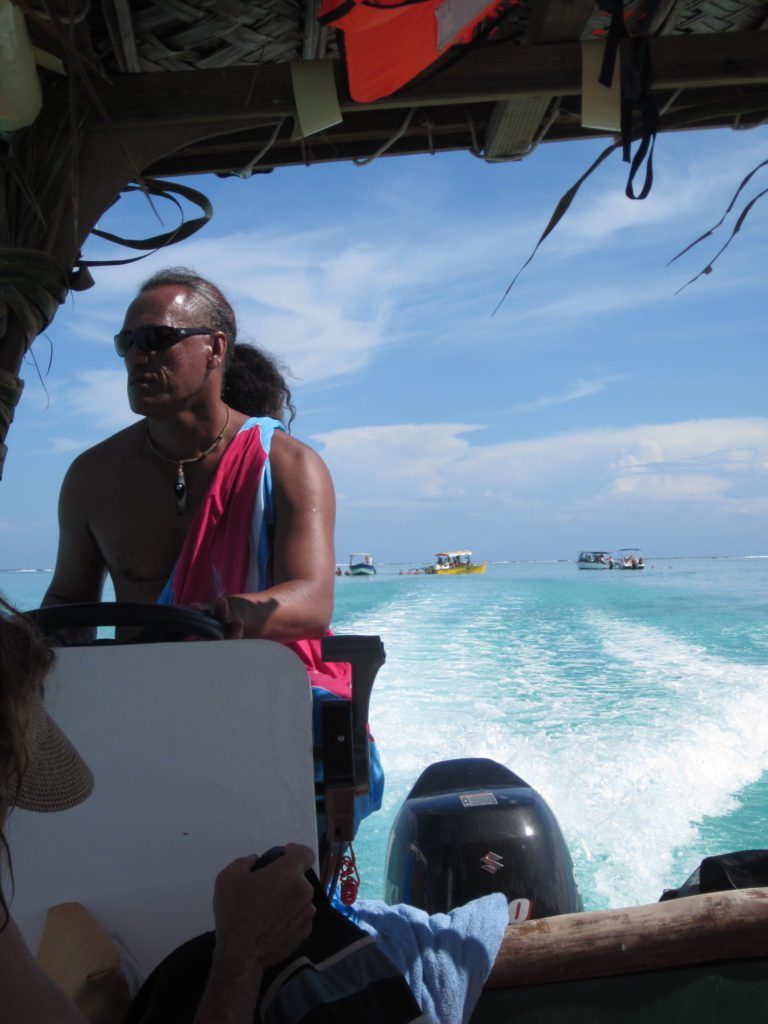
Day two was a very special outing and we were so fortunate to have the owner of Maohi Nui Tours, Patrick Tairua, as our guide for the day. From our cruiseship we tendered into the port, which was very small in comparison to many of the ports we visit. It is really a dock with an office building and a hanger for boat storage in the off-season. We boarded Patrick’s outrigger boat, and with parties of eight, two boats headed out for this adventure. This is not like home. That is all I can say. We gazed up to the mammoth mountain as our backdrop, and skimmed along the water with a cool spray in our faces. Patrick serenaded us with his ancient Polynesian songs and played his ukulele as he glided across the water with one knee on the wheel. He has done this many times before. You just get that feeling. It was magical. It is hard to describe the water. It is so beautiful, crystal clear and at least twenty shades of light blue—- it is hypnotizing. I could stare at it all day long.
Our first stop was a lagoon where we could slip off the boat and stand waist deep. We were greeted by sting rays, and with their favorite food in-hand we could watch their antics in the water. I was not anticipating the small sharks, but they were there too. As we donned our snorkeling gear, we explored just below the surface. Having not snorkeled in some time, I was very pleased at how quickly I acclimated myself to the breathing. It was so relaxing, and the water was utterly refreshing. Just me and the fish. And the sharks!
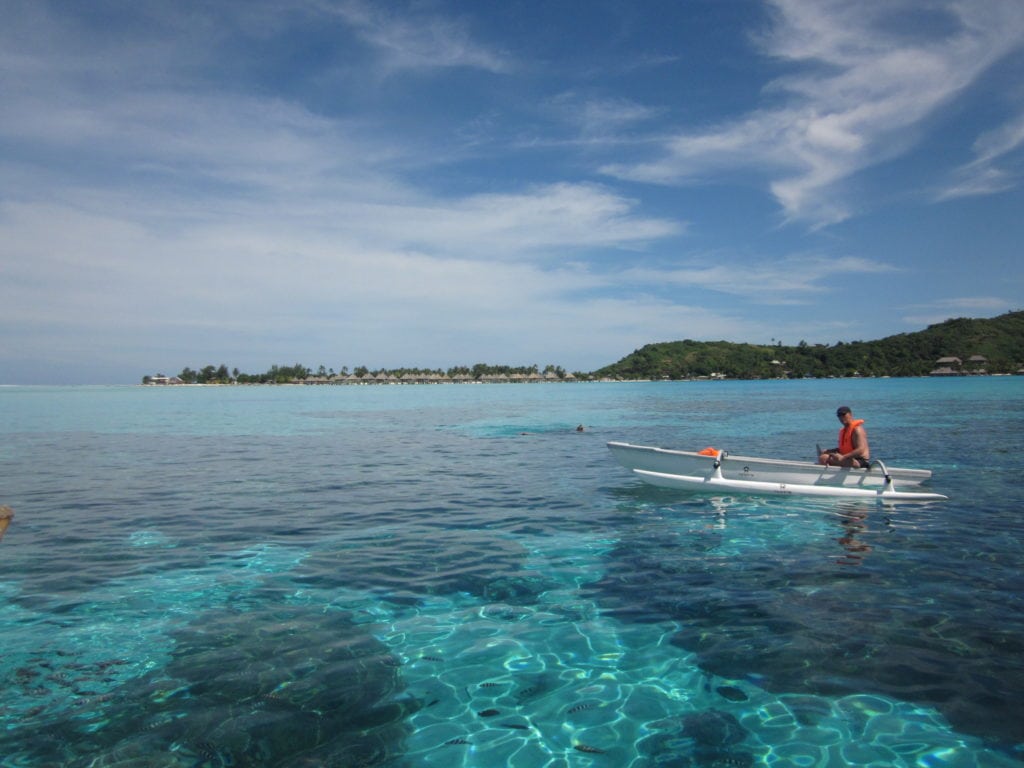
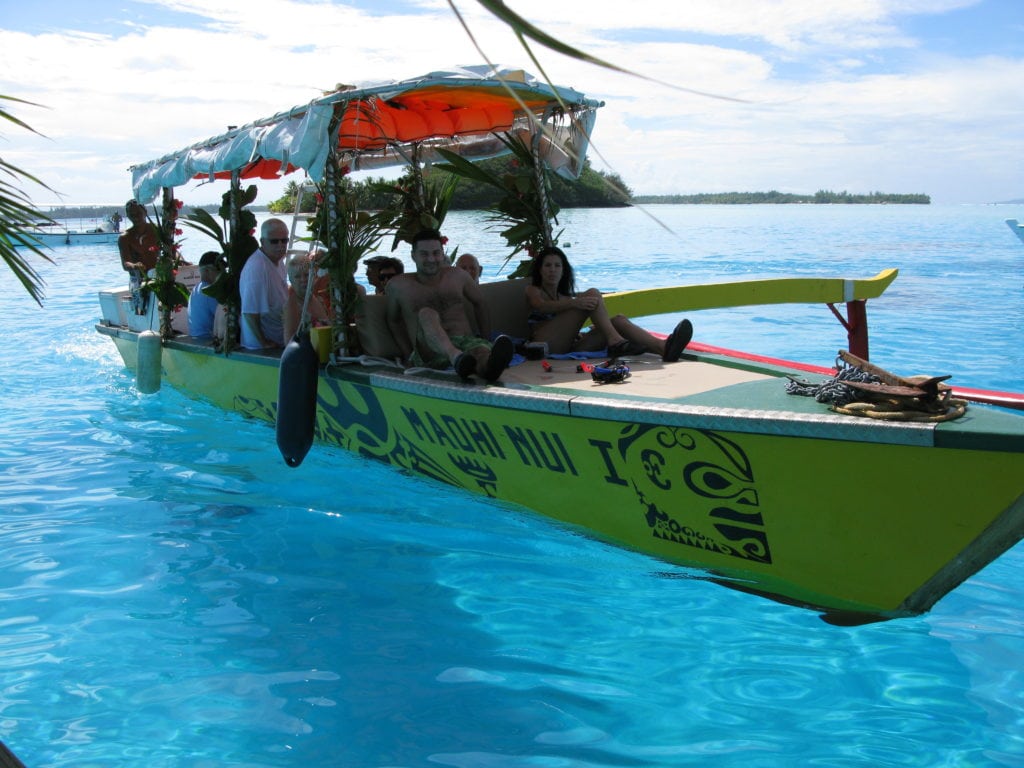
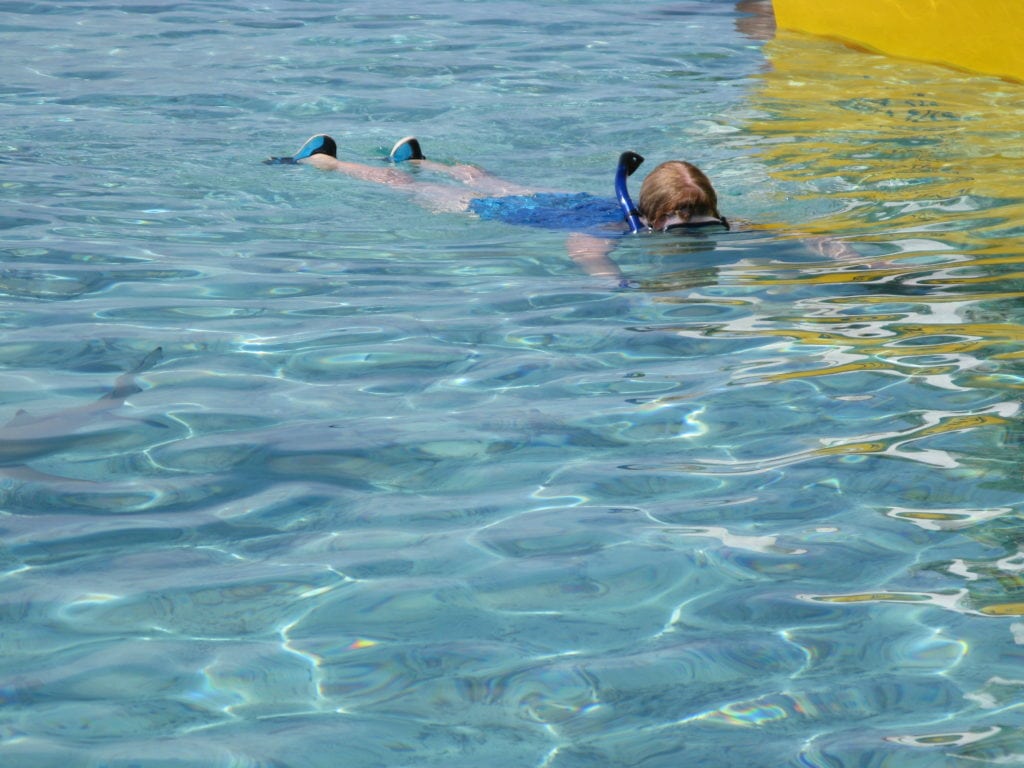
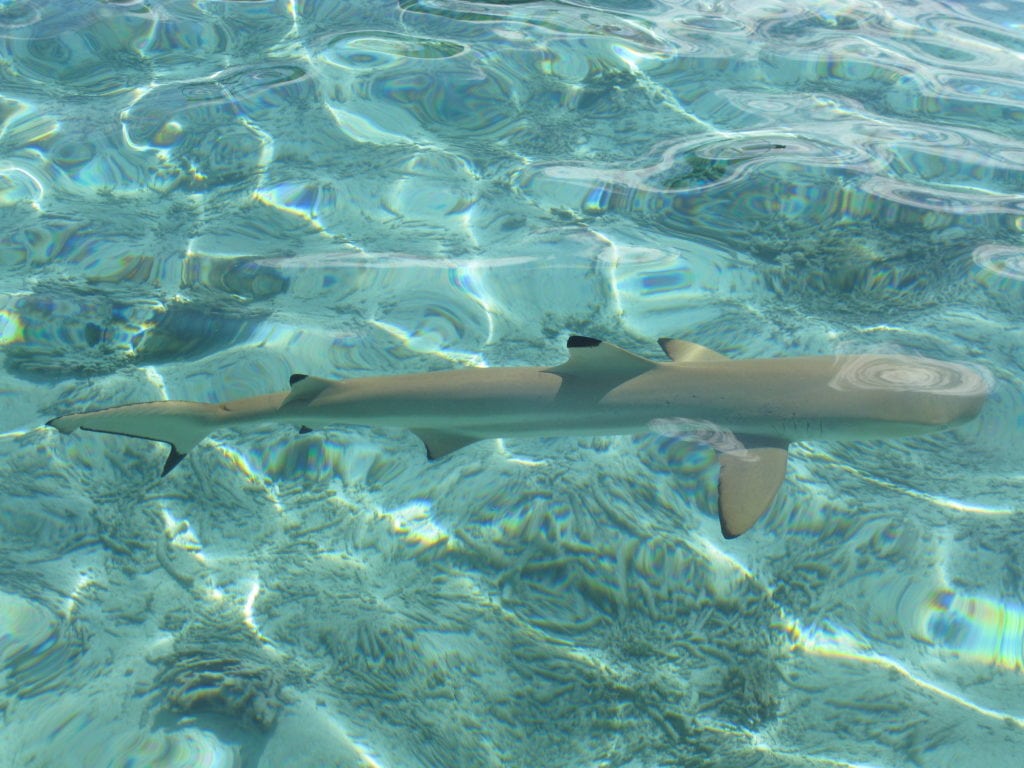
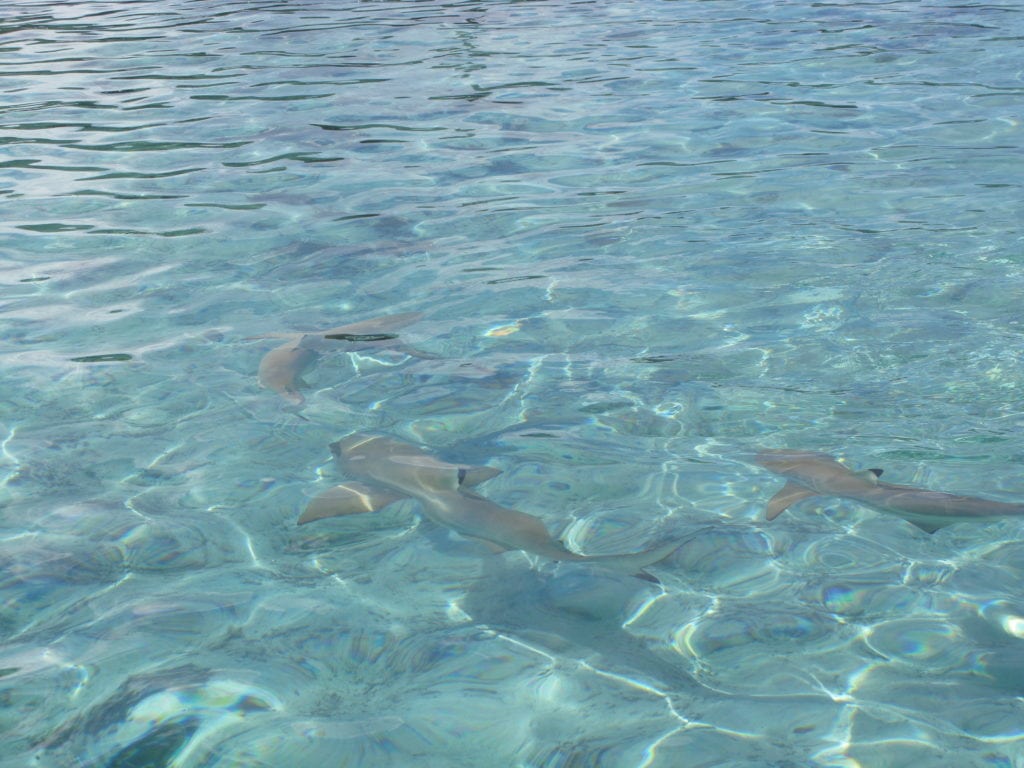
Our next stop was a coral reef, and here we were lowered into the water but were not to touch or step on the coral below. Water shoes were essential in this location! The fish were the most amazing colors, and ranged from small to large—often traveling in large schools. Again, it was a magical time in the water— exploring the sea creatures hugging the coral, floating and dancing in the sea.
The final stop was unexpected to say the least. As noontime approached, I was expecting a box lunch, in my lap, on the boat. We were pleasantly surprised when we docked at a remote island Motu, with picnic tables and colorful umbrellas parked at the shallow waters edge. Champagne corks popped, and I just knew this was going to be good. As we entered the camp, I could see eight locals tending to the food and welcoming us. A chef was stationed on the grill—brushing 30 lobster tails with drawn butter. Patrick escorted us over to a pit with palm fawns atop. He explained the technique for cooking in the area, and as he uncovered the outer shell, underneath was half a pig, vegetables in large pots, corn and so forth. It was great fun to see this up close. We feasted on a delicious culinary adventure, and shared stories of our wonderful day in the water. We returned to the port a few hours later and wished it could have lasted all afternoon. This was the best excursion I have ever experienced, and I have done many! Thank you Patrick– to you and your wonderful family for making our Bora Bora trip so special!
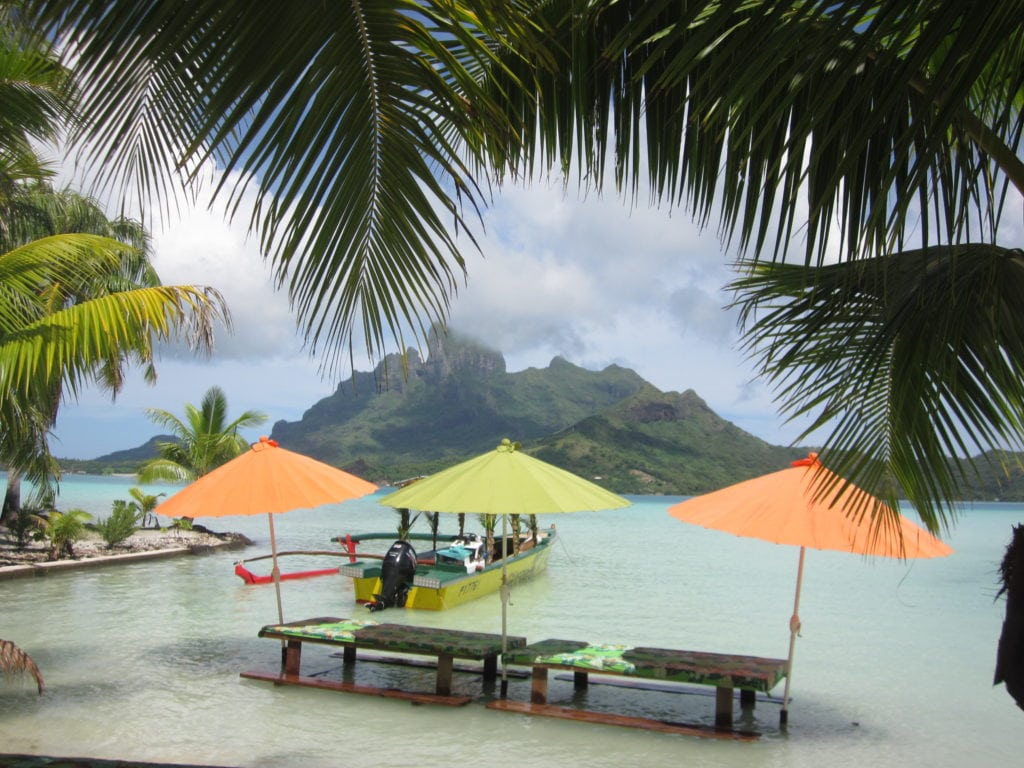
Maohi Nui Tours
-Half Day Island Jeep Tour ($74 each)
-Three-Quarter Day Lagoon Tour, Snorkeling and Lunch ($130 each)
–Patrick Tairua- Maohi Nui
-Address: BP 261-Vaitape 98730 Bora Bora
-E-Mail: patrick@maohinui.net
-Website: www.maohinui.net
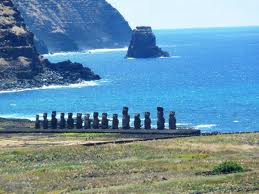
Next stop was Easter Island. To say that we were in the “middle of no-where” was an understatement. We had cruised for four days before tendering here, and in every direction, for as far as the eye could see, was yes indeed—-water. Nothing but water. I thought it would be exciting to finally be somewhere this remote, but to be honest it was somewhat odd.
To the west of Chile, in the south east Pacific Ocean, stands Easter Island— also known as Rapa Nui by the indigenous people. The island has a very turbulent history, so for those who want to delve into this, you will need some patience. No one can even agree on when it was originally inhabited. That ranges anywhere from 300 CE (Christian Era) to 1200 CE. Chief Hotu Matu’a is believed to be the first one to arrive in a large canoe with his wife and extended family. It is thought that they came from the Marquesas Islands from the west and brought with them bananas, taro, sugar cane and paper mulberry, as well as chickens. Fast forward, there were Dutch explorers arriving in 1722, and Spanish explorers in 1770, and a group of missionaries in 1866. Wars, plagues, and exploitation abound. Easter Island was annexed by Chile on September 9, 1888. Until the1960’s the Rapu Nui inhabitants were confined to the downtown area known as Hanga Roa, while the rest of the island was rented to the Williamson-Balfour Company as a sheep farm until 1953. The Chilean Navy then managed the island until 1966 when the island was reopened. The island also gained notoriety when the U.S. government extended the Mataveri International Airport in the 1980’s as an emergency landing site for the space shuttle. This led to a huge influx of visitors as large planes were now able to land on the island. Today the island has approximately 6,000 year-round residents.
Our first tour site of the day was a visit to the Rano Kau Crater. This was a 25 meter deep volcano dating back 2.5 million years ago. As we gazed to the depths of this huge caldera, we could see water and tall grasses. The wind whips up the sides of the crater and offers a dramatic sense of excitement indeed.
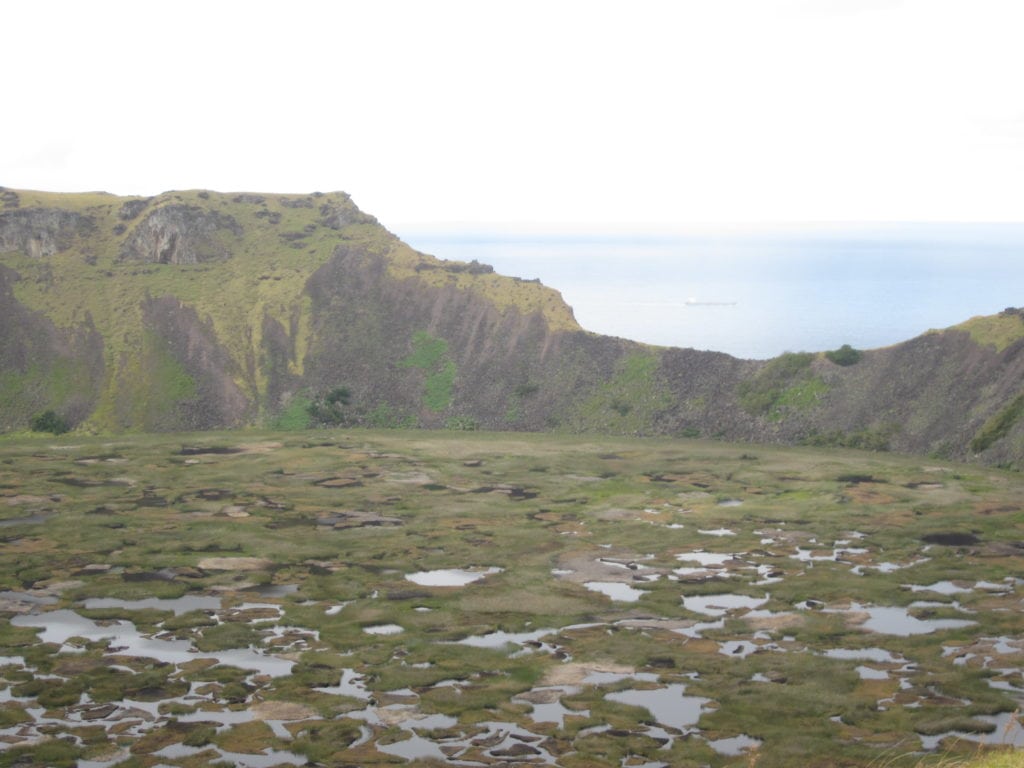
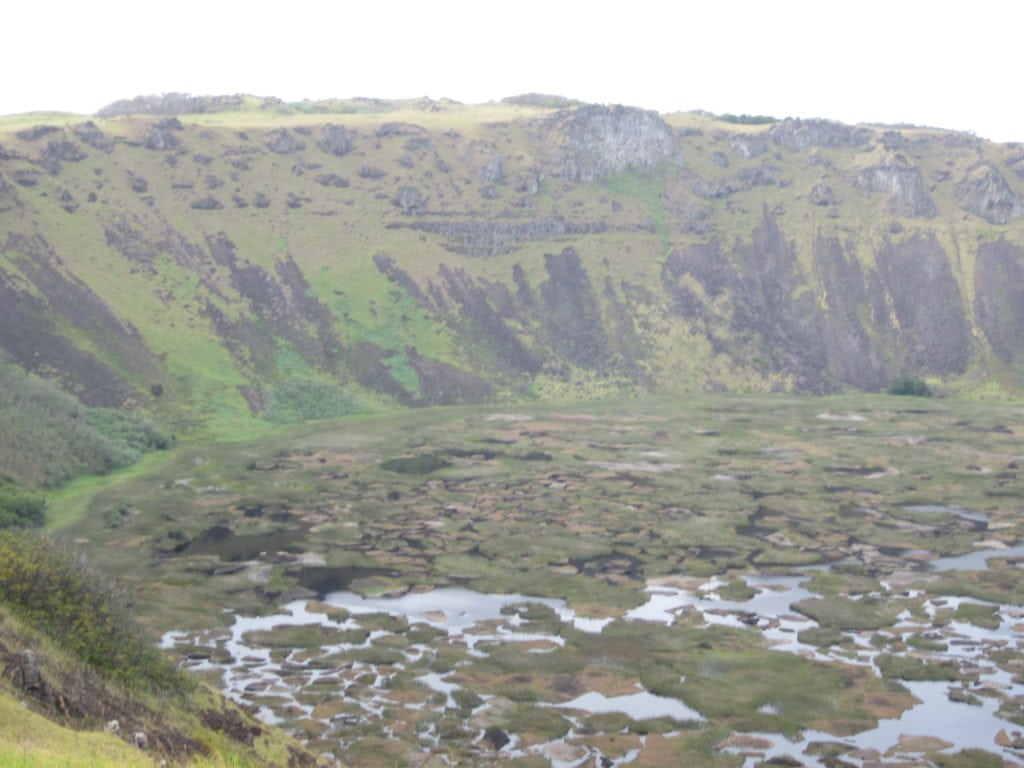
Our second stop was Orongo Trail—the Birdman ceremonial village. This includes 54 rock formations, or cave dwellings, along a cliff-side pathway. They were only used during the spring months. The buildings contain extensive rock art carvings and paintings. Just off the coast, seabirds would nest in the Motu Nui islet. Residents of the island would migrate to Orongo for an annual ceremonial celebration. Participants would be selected, and wearing a headband of sorts, they would swim out to the rock, find one of the seabird’s eggs, and the first one to return with the egg in-tact, was the Chief for that coming year.
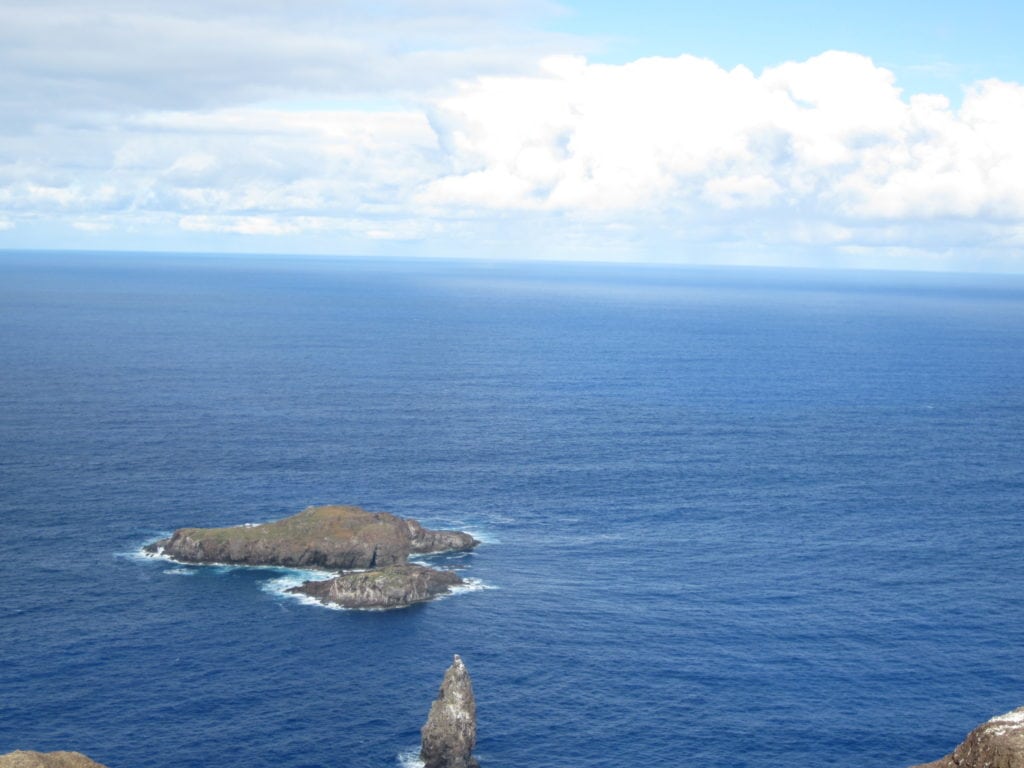
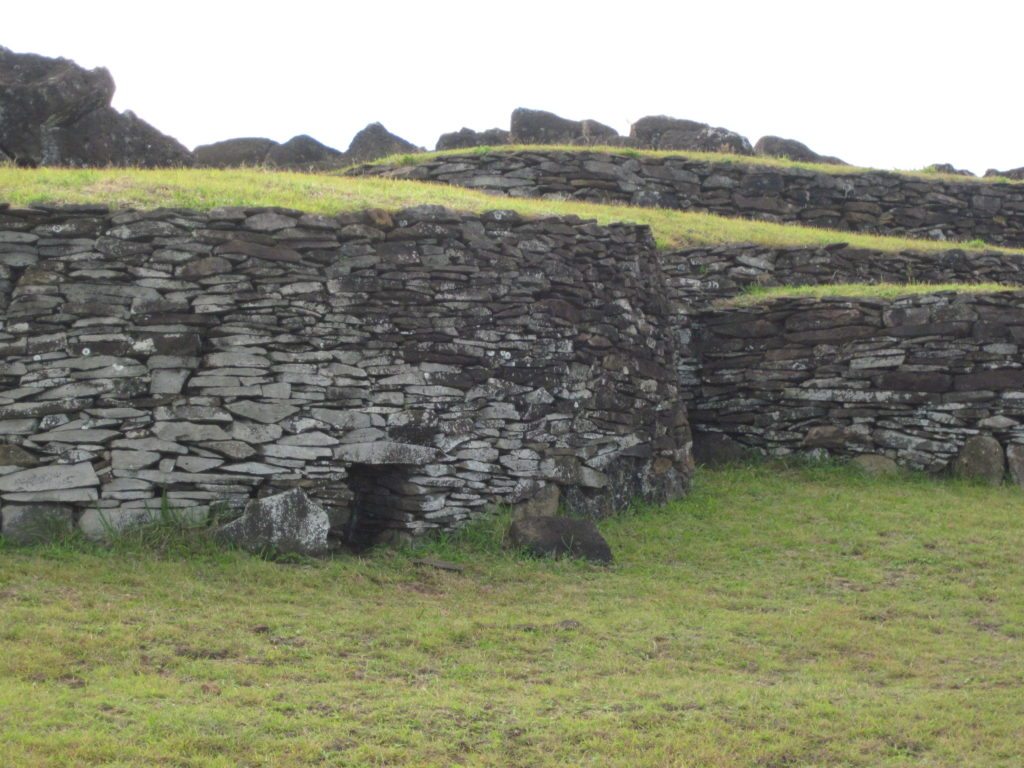
However the most exciting discovery was yet to come. The humongous stone structures that we had only seen in photographs—- the famous Moai Statues. They were carved in a quarry on the north end of the island and believed to have been “walked” into their positions using large ropes and lots of workmen to guide them. The research on this is fascinating. The Moai statues faced inward to protect the families and were carved from stone with other material for a head-dress of sorts. Some had eyes made of coral. They are approximately 30 feet tall, and to stand before them is quite overwhelming. They look to be about 30 feet tall—or three stories tall, if compared to a modern building. It is very exciting to see, and in some locations they back up to the ocean and create a very dramatic landscape. In the evening, we could see them from the ship—lined up like wooden soldiers along the coastline—guarding their beloved Easter Island.
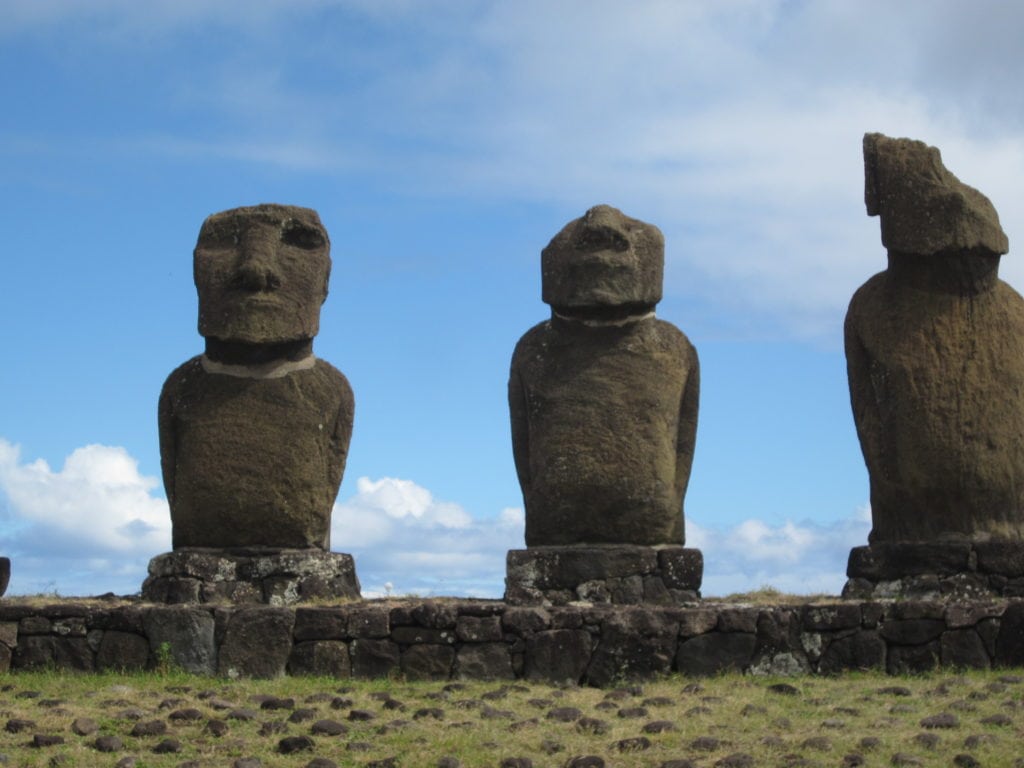
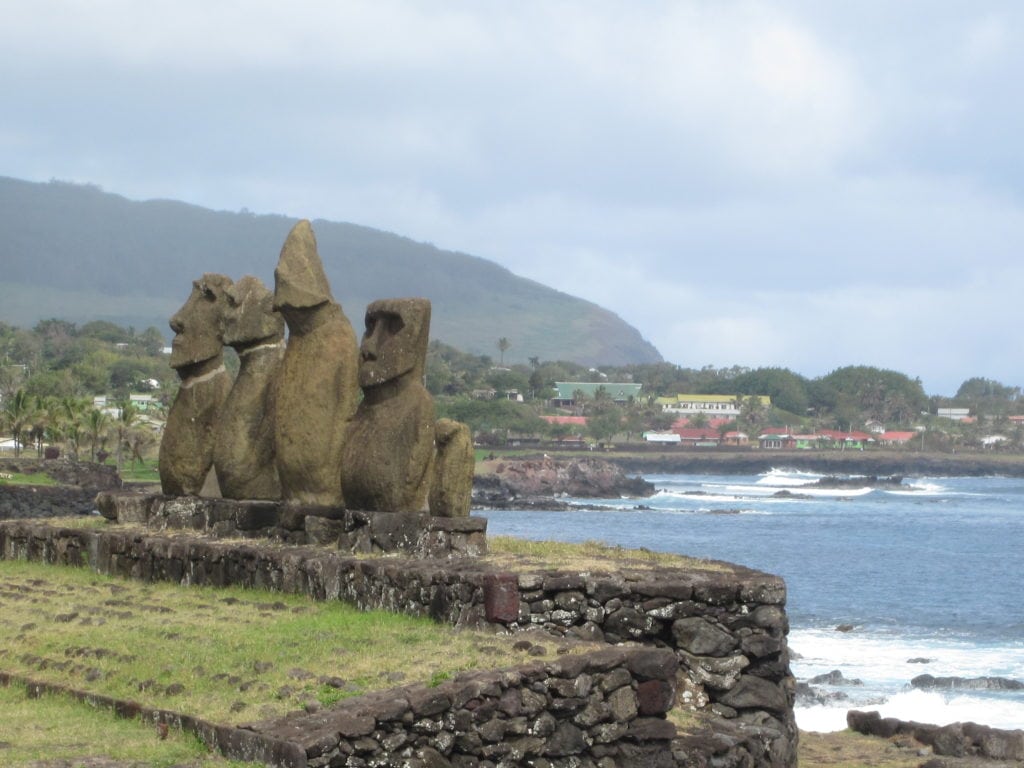
Lima, Peru
Our cruise concluded with four more days at sea, and arrived in Lima, Peru. This was a very large port, with cargo ships to the left and right. We made plans to tour Lima, and then travel to Machu Picchu via a short flight to Cusco. In the days of the Inca’s (1400s), Cusco was the capital of The Inca Empire. Later the capital became Lima when Francisco Pizarro and the Spanish overthrew the Inca’s in 1535. Pizarro founded the “City of Kings” with a Government Palace, Lima City Hall, Archbishop’s Palace and a Cathedral all surrounding the center square. It is all there today and very much worth seeing. There are a total of 43 sections of Lima, and it is quite an expansive city.
We visited Casa Aliaga, the oldest colonial mansion in the Western Hemisphere and it is still inhabited by the same family since 1534. The Aliaga patriarch was a confidant of Pizarro’s. All of the furnishings are still intact, and it is a pleasure to tour this lovely mansion, right in the middle of town, and behind an inconspicuous wooden door on a wide walking path. (Reservations for this tour are required, and being accompanied by a guide may also be necessary.)
We visited the well-heeled neighborhood of Miraflores and saw the many fine hotels flanking the coastline. There are two museums that are worth a visit (and probably many more but our time was limited).
1) The National Museum of Anthropology, Archaeology and History which is located in the Pueblo Libre district. It was founded in 1826 and is the oldest national museum in Peru. It covers the history with huge collections of pottery, textiles, gold and silver. It is in a single story building with a center courtyard, which at one time was a home.
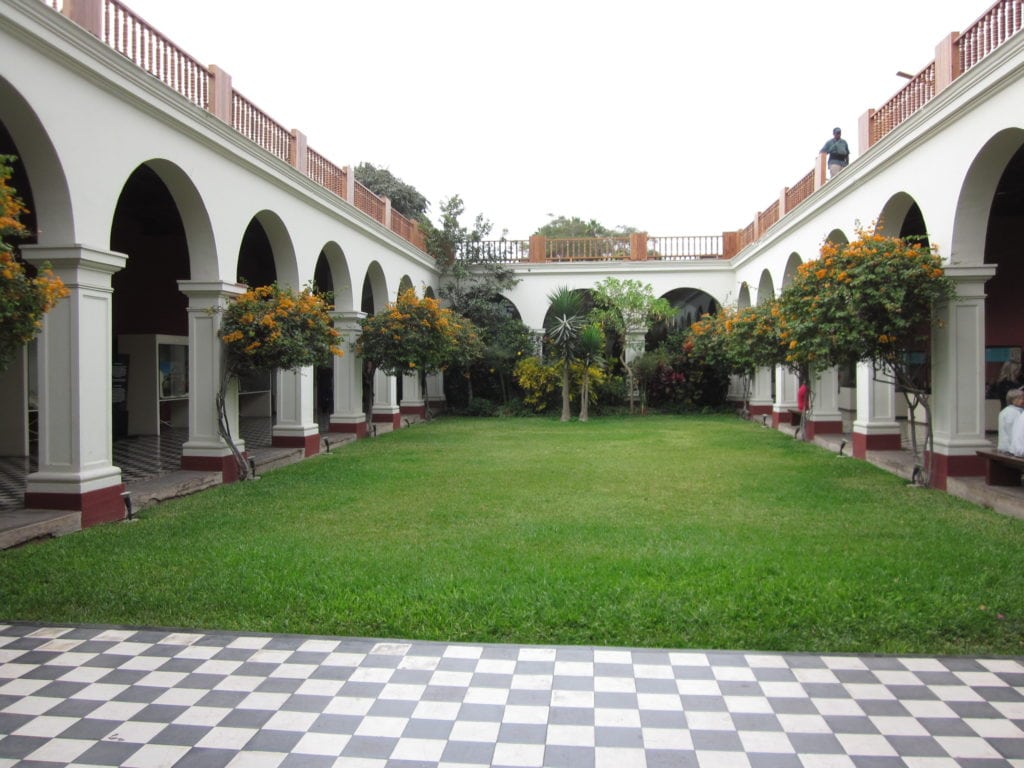
2) The second museum is the Rafael Larco Herrera Museum. This was founded by Rafael Larco Herrera in 1926. It is located in a mansion that was built on a pre-Columbian pyramid of the 7th century and houses the most complete of Pre-Columbian collection of gold and silver artifacts, as well as pieces of erotic art. A staggering 45,000 piece collection of archaeological artifacts and ceramics covering 5,000 years of Peruvian history are lovingly stored on shelves in various rooms. It is an overwhelming amount found all in one place for you to view—shelves after shelves—and room after room. It is surely a tribute to Mr. Larco Herrera’s dedication and that of his family. His great grandson is the gracious executor to the estate now, and takes great pride in sharing this with visitors.
Antiquities by the Thousands
We made our basecamp at the Swissotel in neighboring San Isidro (known for its many embassies). This hotel was a lovely choice and one we would recommend. In addition to the friendly staff, and fine accommodations, there were four dining options and we enjoyed two of the four, after long days of touring. There is a dining room for breakfast and lunch, a sushi bar, around the corner was a fantastic café that served lunch and dinner. We enjoyed delicious sandwiches & soups and it was quite the spot for local staffers in office buildings nearby. The wait staff could not have been nicer. One evening we dined in the upscale restaurant on-site at La Locanda.
Dining In Lima- La Locanda Restaurant
The waiter presented us with an Amuse-bouche that consisted of Steak Tartar Tataki which was tender and delicious. A presentation of Argentinian Olive Oil and breads were next. Being a real bread-hound, my eyes were wide open as this parade of doughs made its way to our table. In all shapes and sizes, there were slices of: pesto, potato, ciabatta (which is Italian means slipper), herb rustic with onion seeds (my favorite), and focaccia bread. For a starter we selected a Caprese Salad and savored our sharing of the fresh mozzarella cheese, tomatoes di Modena, basil, and balsamic vinegar. My husband enjoyed for his main course, Sea Bass in Pink Salt. Sea Bass was cooked in pink salt, with a balsamic and champagne reduction, adorned with half of an avocado, vegetables including: zucchini, asparagus and eggplant, and a side of tomato risotto with truffle oil. I enjoyed San Torino Pennette with marinated & sliced rib eye steak, green asparagus, and wild Mucola-Marayhuaca mushrooms. For dessert we shared a cheese mousse with limoncello and ice cream. Yes we really did have that. Writing this, I cannot believe we did so! It was incredible and the service was beyond compare.
Swissotel Lima
Via Central 150, San Isidro
Lima Peru
www.swissotel.com/lima
3) Machu Picchu
This was truly a “trip of a life-time” and we could hardly wait to see this magnificent, magical hilltop enclave. However—a word of caution. This can be very challenging trip—from both a physical and logistical standpoint. It is not an easy journey— no matter how well you plan it, or how much you pay. [Note: Please see my “Logistical Insights~ Planning Your Trip To Machu Picchu” section at the end of this article for some important suggestions and “tips and tricks” that will make your trip much more enjoyable.]
Let’s forget for a moment how we got there, and back, and just enjoy this exploration. So, without further ado—We Enter Machu Picchu….
Finally There!
We were finally at this heavenly ancient site that we had only seen in pictures. Now we were here to enjoy this splendid day of discovery! Sigh. After a 5:00am wake up call, and a four hour trek on a bus, a train, a visit to the base camp (of sorts), Aguas Calientes, and another vertical switch-back trail by bus, we were finally at the entrance gates of Machu Picchu. Our hearts were suddenly beating a little faster. After a quick lunch at the Sanctuary Lodge and Restaurant, we met our guide, Mr. Darwin, who was arranged for us by Lima Tours. He took us on an exciting 2 ½ hour tour and I highly recommend using a guide. He held his ipad at the ready with an array of historical pictures and short videos to bring the story to life for us along the way. It was just fantastic!
Our eyes were wide open, as we navigated our way through the gates, and traversed the narrow pathway to the first dramatic perch. This was a true “Kodak Moment” and the view did not disappoint. It took our breath away. I was literally shaking as I stood there and inventoried this massive site below.
As we glanced from left to right, there were structures everywhere. It was truly remarkable what we saw below us and out into the far distance. The center had a grassy, flat open area—-most likely used for processions, games and village activities. At the far end beyond the site, is a tall mountain Huayna Picchu, or Wayna Pikchu “young peak”. (Today, this requires a permit to climb this mountain and camp along the way and only a small number are issued each day.) There were agricultural areas all around the cliffs edges, with many terraced ledges that were used to grow corn and other crops. The upper-town to the left was occupied by the village workers and farmers. The lower-town to the right was reserved for the Emperor and his elite family members and guests—providing commanding views of the river below and mountains above. Behind this lookout, is another mountain peak referred to as Machu Pikchu “old peak” and today provides a route for a one day hike. And across the gorge is a third peak, from which the sun rises behind its imposing stand.
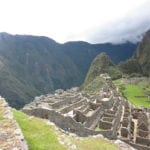
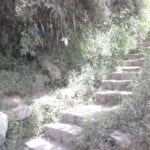
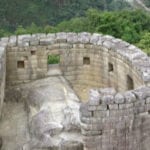
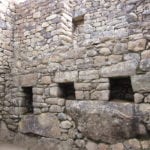
Aerial View One Step At A Time
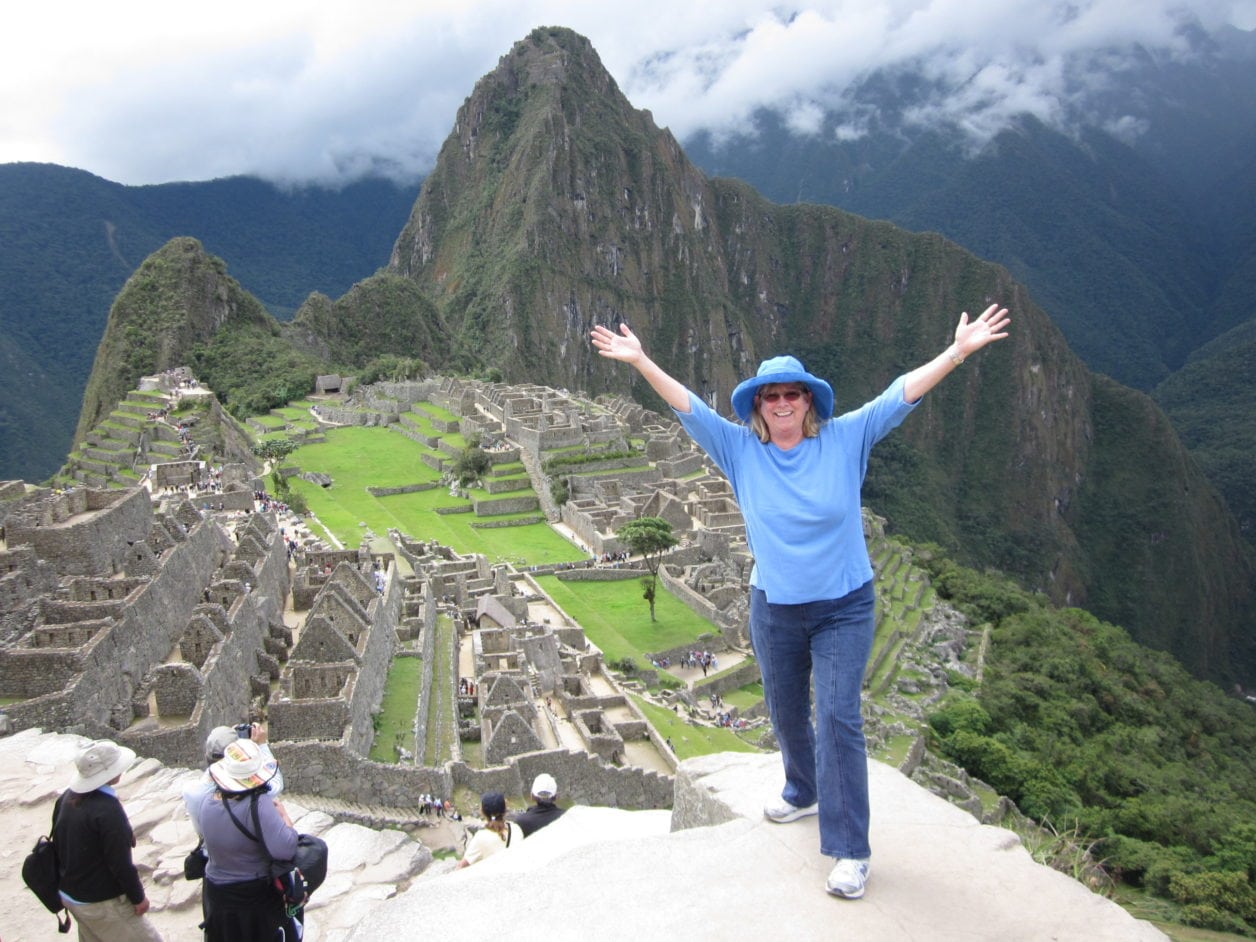
I’m Finally Here
Elevation-wise the site is approximately 8,000 feet above sea level. People often think the altitude is a problem, but in reality, it is of greater concern in Cusco, where the airport is located. Cusco is at 11,300 feet above sea level, and that takes some adjusting to. Machu Picchu contained approximately 200 structures— most of which still stand today. The buildings were typical late Inca polygonal masonry, built of granite blocks cut with bronze or stone tools, and smoothed with sand. This technique is called ashlar. The stones were extracted and shaped at the site—supported by the fact that a quarry has been found at Machu Picchu.
It is believed that this estate is from the mid-1400s for the Emperor Pachacutec. Many of the structures were built in perfect harmony with the sun rising, and may have been built to honor the Sun Gods. It is estimated that there were a couple of hundred workers, both men and women, year-round taking care of the estate. In the spring and summer months when the Emperor and his family and guests would visit, the enclave would swell to a population of up to 800 or so. Sadly, there were no writings, artwork or written documentation to explain much of what went on at Machu Picchu. There have been some excavation of human remains in the caves on the site, but that is about all that available.
The homes, temples and altars were cut from stone, and the entire village was fed by open canals, waterways and fountains. They were masters of water and irrigation. The village sits atop sheer cliffs on every side with three tall peaks towering above. Doors and windows were built as a trapezoidal and tilted inward from bottom to top. The corners were usually rounded, inside corners often inclined slightly into the rooms, and “L” shaped blocks were often used to tie outside corners together. As a result, Machu Picchu is a city that has survived many earthquakes over the hundreds of years.
Back to today… we started up the hill and worked our way around the entire village. There are uneven steps and no railings, and in many places there is a significant drop below to another level—in some cases 20-30 feet. So we had to be careful and pay very close attention as we “billy-goated” our way around the entire site—exploring the buildings, the waterways and enjoying the many buildings and textural sites. We viewed a sun worshiping site, and as it was explained, on the Summer Solstice (June 21st in our calendar), the sunrise would come up over the mountain, and shine directly thru the three windows so perfectly placed, as to shine on a slab of stone, perhaps used as an altar. Our guide, Mr. Darwin, has made that trek many times and showed us pictures of last year’s Summer Solstice at that very spot. This was the most spectacular site we have ever explored. It was beautiful and amazing all at the same time. When it came time to leave we were a bit sad, as we doubted we would return to this spot again. It is a magical place indeed.
Some Machu Picchu History
Visiting this spot made me want to run back and do some additional research. And so I did! For those who are interested, here are some of the highlights…
About Emperor Pachacutec
It is believed that this estate was built in the mid-1400’s for the ruler Pachacuti (he who shakes the earth) Yupanqui (with honor) or Pachacutec, as he was known. He had held a victory over the Chancas people who were vicious warriors and opposed the Incas. This win caused his Father, Inca Emperor Viracocha to recognize him (his second son) as his successor around 1438. Pachacutec was the 9th Sapa Inca (reigning from 1438–1472) at the Kingdom of Cusco. During his reign, he transformed the area into the empire Tawantinsuyu, or the Inca Empire. He designed the city of Cusco to be an imperial city, and two of the most renowned monuments—the great sun temple of Coricancha and the fortress of Sacsayhuamán. He was considered a great leader with many accomplishments and charisma. He was referred to as the “son of the Sun” and was known for his planning and management skills.
But Who Really Found Machu Picchu?
The site name means “old mountain peak” in the Inca language, and stands 7,980 feet above sea level. The hidden site is flanked on both sides by tall mountain ranges and across the river gorge is a third mountain protruding up toward the sky where the sun rises. It is located 50 miles from Cusco (the capital at that time) with the Urubamba River swiftly flowing below. The structures were built in the classic Inca style of stone walls with thatched roofs. There are a few buildings that have added the thatched roof, serving as an example to today’s visitors. There were three distinct “sacred districts” including: the Hitching Post of the Sun, Temple of the Sun and Room of the Three Windows. All were perfectly aligned for key astronomical events during the year.
Building began around 1450, and was abandoned about 100 years later. Unfortunately it is unclear exactly why it was abandoned. The Spanish Conquest began in 1572, but luckily they never found this site. Or at least many think they did not find it. (They did bring with them Small Pox, to the area, but that was not found in Machu Picchu. Scientists were able to exhume the remains of grown men and women workers that were buried in caves, and conduct testing.) Was it a lack of rain in the area, was it no longer serving the needs of the Emperor to worship the Sun? Or, was it abandoned when the Emperor passed away? It is unclear which tale to believe as there are no carvings or written history. In the past year or so, there have been excavations that indicate that perhaps the Spanish did find the site, but chose not to destroy it due to its remote location. This has not been verified, but the scientific intrigue continues.
But Who Knew What When About Machu Picchu The Ancient Site?
Most people credit Hiram Bingham with finding the site of Machu Picchu, but in fact there were many men that came before him. Later in life, he received a great deal of criticism for not recognizing and honoring those who had helped him along the way. Let’s briefly explore a few of those men….
As legend has it from the locals, a farmer named Melchor Arteaga, who lived sixty miles from Cusco in the Urubamba Valley was the original person who discovered the “Lost City of the Incas” as far back as 1867, or 45 years earlier than what is now attributed to Bingham. And in reading the history, there are many other men who had discovered it as well.
A map created by the German geologist Herman Gohring shows Machu Picchu clearly on the map. He had been part of an expedition in 1872. Another map was discovered showing the location of gold mines in the Urubamba Valley drawn by the American Harry “Poker” Singer in the 1870s. Singer was a chemist, miner and surveyor who had spent six years studying at Gottingen University in Germany before taking part in the California gold rush of 1849. As well as the gold mines Singer’s map also showed a road leading up to Mandor Pampa and the location of a saw-mill close to the current site of the small town of Aguas Calientes, from where today’s tourists make their way up to the ruins of Machu Picchu. There was also Augusto R. Berns, a German Engineer and adventurer who bought the hacienda of Torontoy, on the northern side of the Urubama River just across from Machu Picchu. He wanted to sell silver and gold artifacts from the Incas, and was granted permission from the Peruvian government to do so. (There is no real evidence that Berns actually set foot on Machu Picchu, however from his map, it seems clear that he was aware of its existence. He had lived in the area for many years and must have heard about the ruins from other landowners and farmers.)
And there are many others… a Peruvian Agustin Lizárraga, from Cusco who, in charcoal, wrote his surname and the year 1902 onto a rock at Machu Picchu where it was later found by Bingham. There was a photograph of this writing. Lizárraga was accompanied on his travels, on July 14, 1902 (almost ten years to the day before Bingham’s visit) by Gabino Sanchez (from the Caicay district) and Enrique Palma. All three of them were agricultural workers on the Colpani estate in the district of San Miguel. They took care of all the bridges over the Urubamba River between Cuzco and Quillabamba. Lizárraga had lived in the nearby valley for over thirty years but, apart from writing his name on the rock, made no mention of his visit to Machu Picchu. Since he was only a simple peasant and not a historian or explorer, no-one would have probably taken much notice if he had done so. His party was only interested in Machu Picchu for the treasures that may have been hidden beneath the vegetation.
Lizárraga may even have returned to Machu Picchu in 1904 while acting as a guide for a tour party of 12 which apparently included the daughter of the owner of the Colpani estate, Maria Ochoa-Manga. Lizárraga also claimed to have guided a local aristocrat, Don Señor Luis Bejar Ugarte to the ruins in 1894. In February 1912, shortly after meeting Bingham, Lizárraga fell into the Vilcanota River while attempting to make a crossing and drowned. In 1915 during Bingham’s 2nd visit to Machu Picchu to carry out excavations Lizárraga’s charcoal scrawl was erased. Whether this was accidental or purposeful, in order to try to hide evidence of an earlier visitor, is unclear.
Other possible visitors to Machu Picchu before Bingham were the British missionaries Thomas Payne and Stewart McNairn in 1906 and the Germans Jorge von Hassel and Carl Haenel in 1910. Thomas Payne was an English Baptist who lived in Peru between 1903 and 1952. Shortly after arriving in Peru in 1903 Payne was living on a missionary farm near Cusco where one day he met an American gold-mine prospector called Franklin who told him that while travelling down an old Inca road he spotted some old ruins at the top of a nearby mountain but hadn’t had time to explore them. Payne was too busy to follow this information up at the time but three years later, Stuart McNairn, a Scottish Presbyterian, came to live at the farm and Payne asked him if he wished to join him on an expedition to the ruins. They apparently reached the ruins, spent the night there and descended the following day.
In September 1916, five years after reports of Bingham’s expedition to Machu Picchu had been published, the German engineer Carl Haenel wrote a letter to a Berlin newspaper that claimed that the explorer Jorge von Hassel, his fellow countryman, had actually beaten Bingham to the ruins by a year. His letter went on to claim that it was only the outbreak of the First World War that prevented a major German expedition to the Inca city, which he referred to as “Tampu Tocco”.
The Significant Discovery—A Treasure Uncovered by Hiram Bingham
There were two farmers and their families living in a shack on the hillside about 2,000 feet above the Urubama River. In the early 1900s, these two farmers Melquiades Richarte and Anacleto Alvarez farmed in Machu Picchu, as it was protected from intruders.
Hiram Bingham III, was born in Honolulu to parents who were Protestant missionaries in the Pacific. He was a Professor at Yale University, and had written a book on South American history. He was in Peru, on his second visit in search of the lost Inca city of Vilcabamba. He was hiking with another man by the name of Carrasco, when they came upon a grass hut which was the home of the two aforementioned farmers. The farmers welcomed them in, fed them, and after resting, arranged for an escort to lead the way to the Machu Picchu’s hidden site. It was in fact Richarte’s son, Pablito Alvarez, who escorted Hiram Bingham to the site. He was only 11 years of age, but could navigate the narrow pathway with ease. (Interestingly, in the 1960s an explorer Gene Savoy found the real location of the city of Vilcabamba at Espiritu Pampa, about 40 miles to the northwest of Machu Picchu. Hiram had been in that area on his first visit to Peru in 1909, but had quickly moved on.)
It was July 24th, 1911 when Hiram Bingham, and Mr. Carrasco were led to the site by this local farmer’s son Pablito. Hiram soon found himself walking past walls made from some of the finest quality of stonework he had ever seen. As retold by Bingham in later years, his young guide then took Bingham into an underground chamber lined with beautiful cut stones. Above this chamber was a semi-circular building, similar to the Temple of the Sun in Cusco. The scope of this estate was beyond anything Bingham could have imagined. Bingham later brought back a team of people and began to uncover the city from the grips of mud, heavy brush and vines that had overgrown the entire enclave. This was a huge and expensive undertaking and Bingham and his team deserve an inordinate amount of credit for uncovering this treasure.
Just to give you an idea, by 1976, only 30% had been restored and that effort still continues today. In 1981 it was declared a Peruvian Historical Sanctuary, as the Government wanted to protect significant sites such as this one.
It was recently discovered that Yale has more than 40,000 pieces from Machu Picchu in their possession, many of them still in unopened crates. After a legal dispute that has dragged on for many years Yale recently consented to return all of these pieces to Peru and the first batch, containing those of the highest quality, went on display in mid-2013 in the Casa Concha Museum located in Cusco . The rest will follow over the next year or two.
Who Really Owns Machu Picchu”?
There are many land owners that lay claim to this site, dating back to the 1600s, however the government of Peru declared that these previous owners expropriated ownership of the site and in 1944 insisted that all significant archaeologist sites in the country are property of the nation. The site was made a historic sanctuary in 1981 and two years later UNESCO gave it the status of a World Heritage site. Despite this, both the Abrill and Zavaleta families insist that they should have received payment from the Peruvian government and are demanding compensation of millions of dollars as well as a share in the income received from the almost one million visitors to the site each year.
The Logistics ~ Tips & Tricks to Planning YOUR Trip
To Machu Picchu
This is an amazing trip, and well worth the effort, provided you can physically handle the obstacles before you. That is something you and your healthcare professional would need to decide together. Here is a brief overview of how we visited Machu Picchu, and some suggestions that I wish I had known before we went on this journey. I hope my Tips & Tricks may be helpful to you in planning your trip to this incredible place!
Our Trip…Which May Help You…
-We were on a long cruise and really did not want to spend a great deal of time in Peru, as we knew we would be anxious to return home. So we did this tour in the most expedient way possible. Some of our friends spent a month traveling around Peru, and others spent a week and included the Sacred Valley on their trip. We, on the other hand, did it in three days, including flights in and out of Cusco. We were on a mission!
-We departed our cruise in Lima, toured the city for two days and stayed at the Swissotel which we would highly recommend. We then took a plane in the morning to Cusco. Due to the elevation, our doctor suggested we take Diamoxin, beginning a day prior, which was very helpful. It is recommended that we not drink any alcohol which we adhered to. We took it very easy that first day in Cusco and enjoyed seeing the Main Square, and people watching in the busy plaza. I even had my picture taken with two ladies with the most precious goats that were so soft and cuddly. I was in a foggy heaven.
-We had a tour guides from Lima Tours who met us at every possible juncture and escorted us to the next location. They were wonderful and we highly recommend anyone traveling this route to do exactly this. They were always early, had a van and driver ready to go, and helped us so much in getting from Point A to Point B without a hitch. It was worth every penny!
-The hotel had been recommended by our travel agent and it was lovely. The Libertador Cusco Hotel (part of the Starwood family) was a perfect choice. It is right in the center of town, had wonderful food at all hours of the day and night, friendly staff welcoming us with their coca tea, and was very quiet when it came time to go to sleep. They have retained some of the original Inca walls in the center of the hotel, and it was such a pleasure to stroll the grounds and take in all of this.
-The next morning we were up at 5:00 am for a quick breakfast and to meet our guide at 6:00am. We then made our way to the bus station, which I can assure you we would have never found on our own. No signs, but a small chain link fence that rolled back was all we saw. And behind the gate were buses filled with tourists on their way to “you know where.”
-This was the end of the rainy season (which runs from October to April), and some of the railroad tracks had been washed away. You do need to check the situation when you are going to see what route is necessary at that time. My sense is that it changes like the wind. Again, this was another reason to use Lima Tours. After all this effort, we did not want to miss our opportunity to see Machu Picchu. That would have been tragic.
-We then had to take a 2 ½ hour bus ride up and over hillsides, down into the valley, along the river’s edge, and on and on it went. The bus was very modern and comfortable. We watched out the window as the children cradled their backpacks on the dusty roads walking to school. It was early morning and they were making their way. Dogs were on top of trash bins, searching for food. Men were driving their cars, motorcycles, bikes, and the villages were waking up as our pilgrimage began in earnest.
-We were let off at a train station, and next boarded the train. The coaches were fine with big picture windows, and comfortable seats. There is another rail line called the Hiram Bingham Train, which is much more upscale and serves full meals. In the evening the small vintage lamps are on each table and give you the sense of The Orient Express.
-Almost two hours later we arrive at a station just bustling with activity. This is where the train ends and is the town of Aguas Calientes. We exited and were greeted by another Lima Tours representative. We weaved our way through a market containing every imaginable thing I had ever seen in Peru. My guess is 150 vendors and they were all waving and wanting our attention. There is a very active river that runs right through the center of town, called the Vilcanota River (“house of the sun”) which is a part of the larger Urubamba River. An elevated bridge allows visitors to get from one side of town to the other. The locals are all incredibly friendly, and some of the wares were really quite beautiful. But we had a mountain to catch!
-We took another bus up the mountain that had probably 14 switch-backs. This took about 25 minutes and in some places our bus had to back up to let the other bus traversing downward to make their way. With no guard rails this was rather exciting shall I say!
-We arrive at the entrance where an organized bus depot was operating like a well-oiled machine. We made our way to the Sanctuary Restaurant for a quick lunch and then met our guide Mr. Darwin (about noon time) at the entry gate. Our guide had been arranged for us by Lima Tours.
-The tour was spectacular as previously outlined in greater detail. We returned to the bus area to descend to the base camp area. We had to wait for about 3 hours for our train (a 6:00 pm departure). We wish now that we had taken an earlier train, and here is why…..
-We jumped on the 6:00 train heading out, but little did we know that this would not return us to the spot we visited in the morning. They do not return to the same spot. This train would stop at another town entirely. The train stopped at 8:00 pm in a town referred to as Ollantaytambo. We were very relieved to see a guide with our name on his placard, and as we ambled up the dirt road there were throngs of people. This was quite the hot spot with people picking up family members, and along the left side of the pathway were small restaurants and huts serving dinner and drinks to those who were probably waiting for some time for the train’s arrival. It was an odd experience. It felt like we were in a movie set depicting a time long gone. Our guide and driver were spectacular and we hopped into the van for our ride home. I was thinking we were close to town, but man was I wrong. We had a two-hour trek, through mountains, road detours, long pitch-black stretches of road with the occasional eyes beaming back at us from dogs along the road. We had a great driver but I was praying the entire way back. I avoid routes like that at all costs. They are just not safe, and why risk that on a trip if you do not have to? The tour guide and driver were incredible and so kind. But I was freaking out, no doubt about that. I was so scared I did not speak for the entire trip back. I spoke with my eyes and that is even worse!
Tips & Tricks
-Use Lima Tours to secure a trouble-free trip.
-Check the conditions for various routes based on the rains and closures. (Lima Tours can assist you as well.)
-Consider flying into Cusco and going directly to Aguas Calientes to stay there overnight and relax. There are many restaurants and hotels to choose from. That way, you avoid the potential altitude sickness of Cusco, for the most part.
-If you stay in the Aguas Calientes area, I would not recommend staying at the Sanctuary Lodge at Machu Picchu. Sorry, but at night they herd everyone out of the estate and lock the doors. The buses all leave for the village below. You are very alone and that just creeps me out. I could never stay up there. I would rather be down in the town below with bars, restaurants, hotels, and all the action.
-Do not skimp and pass on a Guide. The Guide makes the visit to Machu Picchu all worth it. There are NO signs or information at the site.
-If you are staying in Cusco, you will be doing a 15-hour day, as we did. It is exhausting. If you do this, catch a train much earlier than 6:00 pm as we did. That is too late, and the return to town is too scary!
-To prepare for this trip, do some serious walking and not just on flat ground but on trails and climbing stairs. That will really help you when you arrive at Machu Picchu.
-Bring a camera and extra battery as you do not want to miss a moment of this. Hat sunscreen and water are also suggested.
-Do some research as we did before you get there. So much information is available, and I do hope I have provided you with some of that here in this article.
Hotel in Cusco:
Libertador Cusco
www.libertador.com.pe/en
Lima Tours (request In-Bound):
www.limatours.com.pe
Travel Agent-Can Arrange Flights and All Tours:
Susan Quadros
Escapes Unlimited
800 243 7227
www.escapesltd.com
Susan@escapesltd.com
Excellent History On Machu Picchu:
http://www.expeterra.com/Expeterra%20Machu%20Picchu.html
http://yaffle53.wordpress.com/2011/08/06/150/
http://prezi.com/xxayny5mdgbc/machu-picchu/ (short video as well)
Please see The “Cooking Section” Of My TastesAndTravel.com web wite to read about the Cooking Classes in the Bon Appetit Culinary Center On Board The Marina Ship by Oceania.


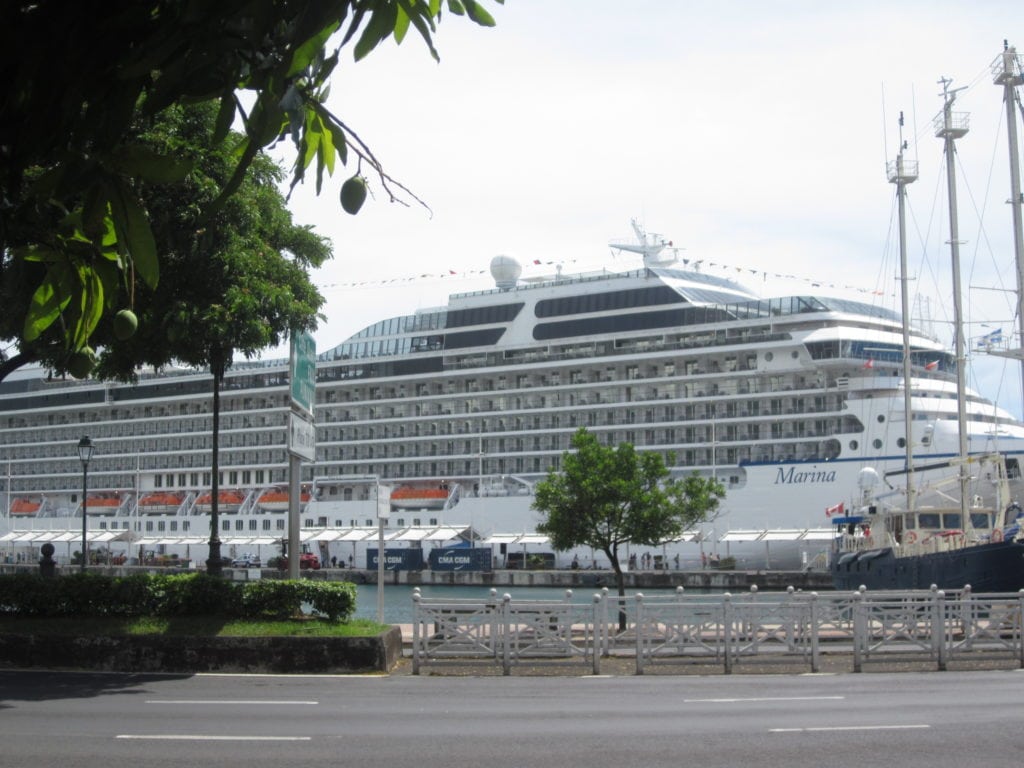
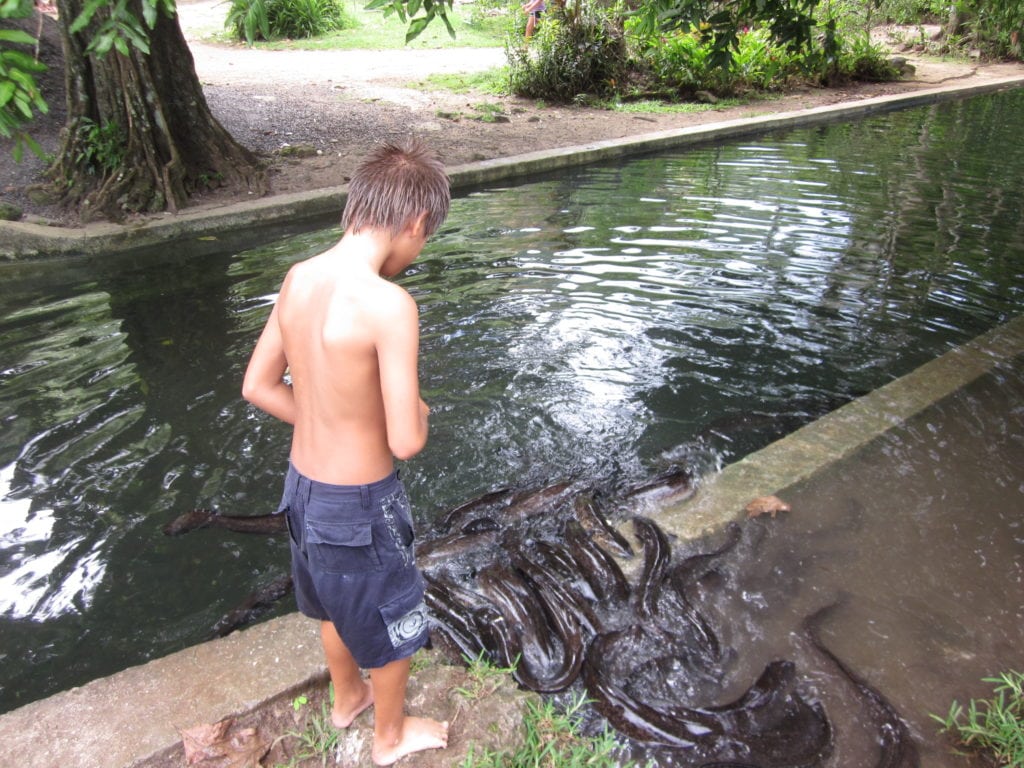
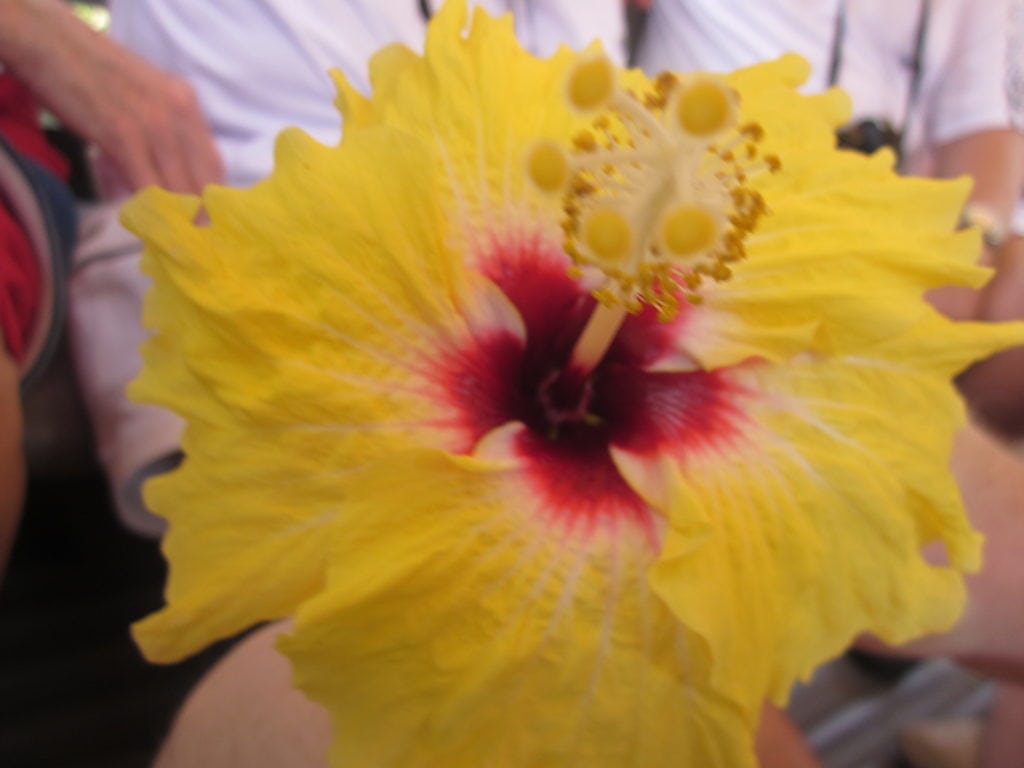
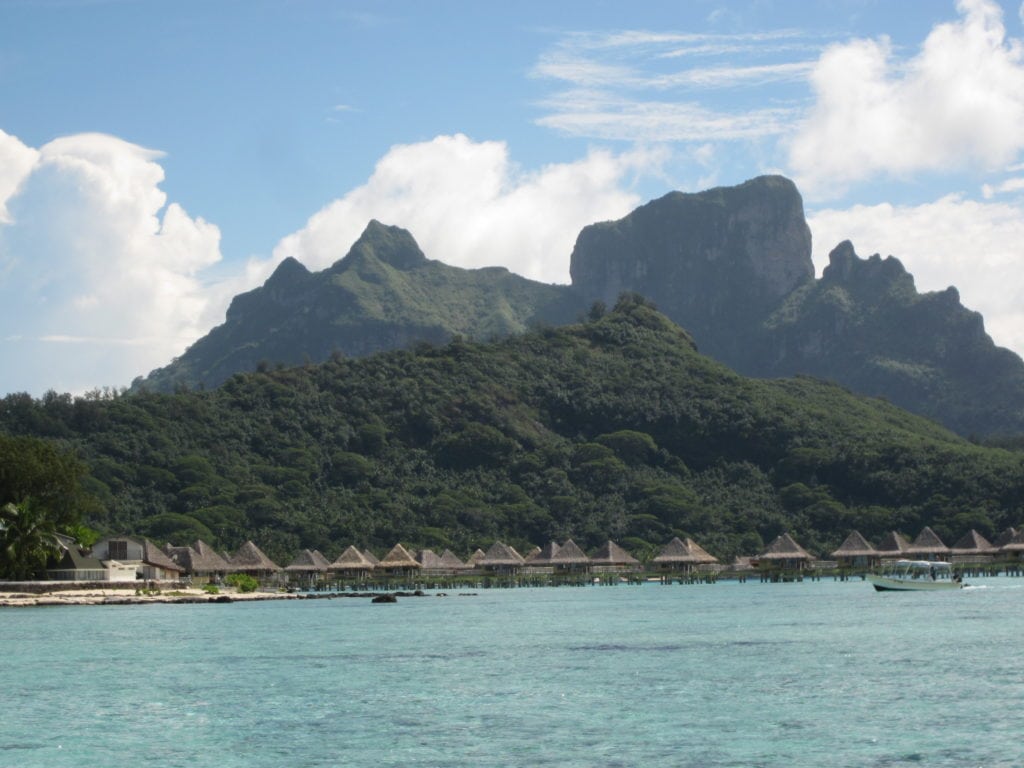
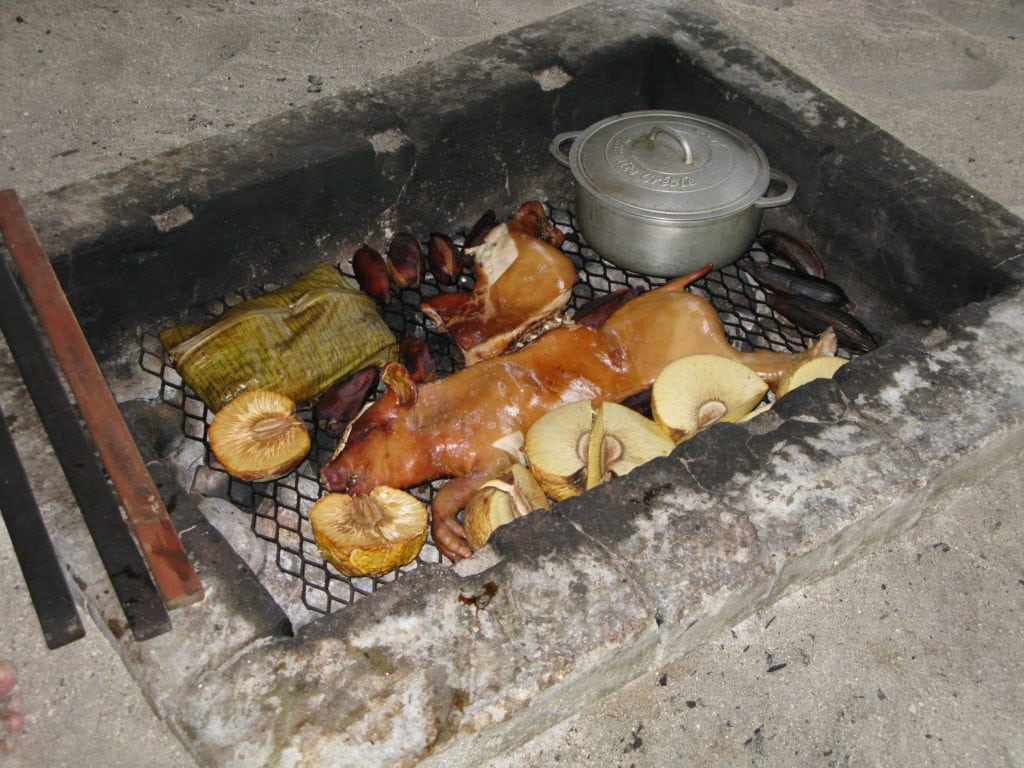
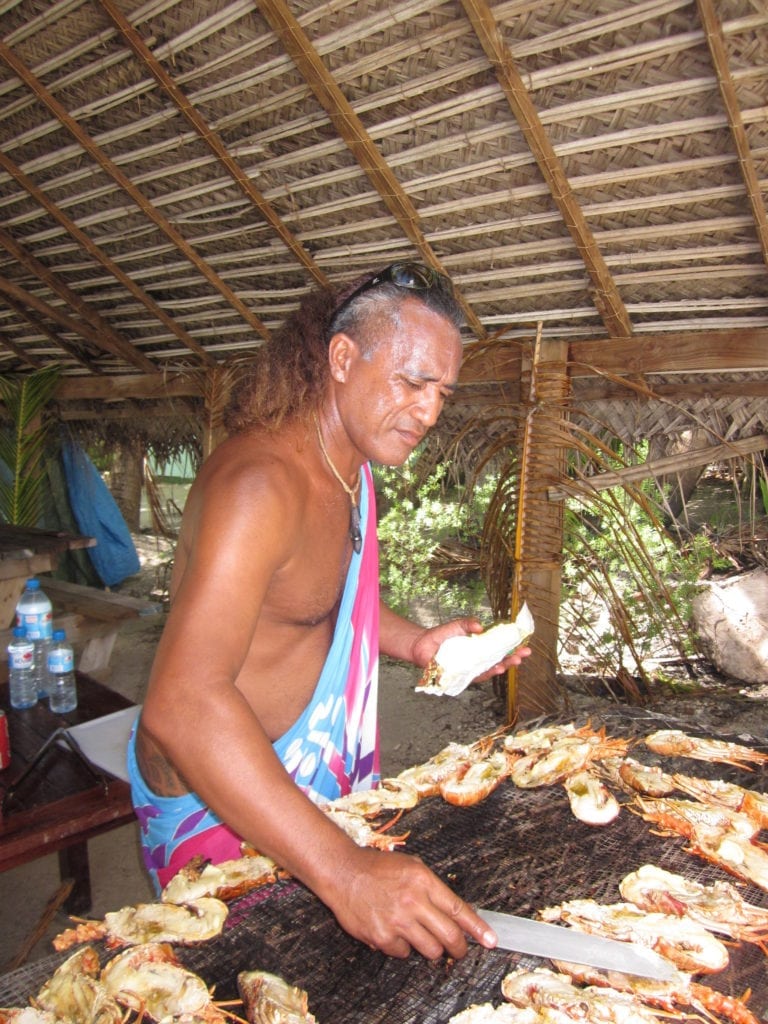
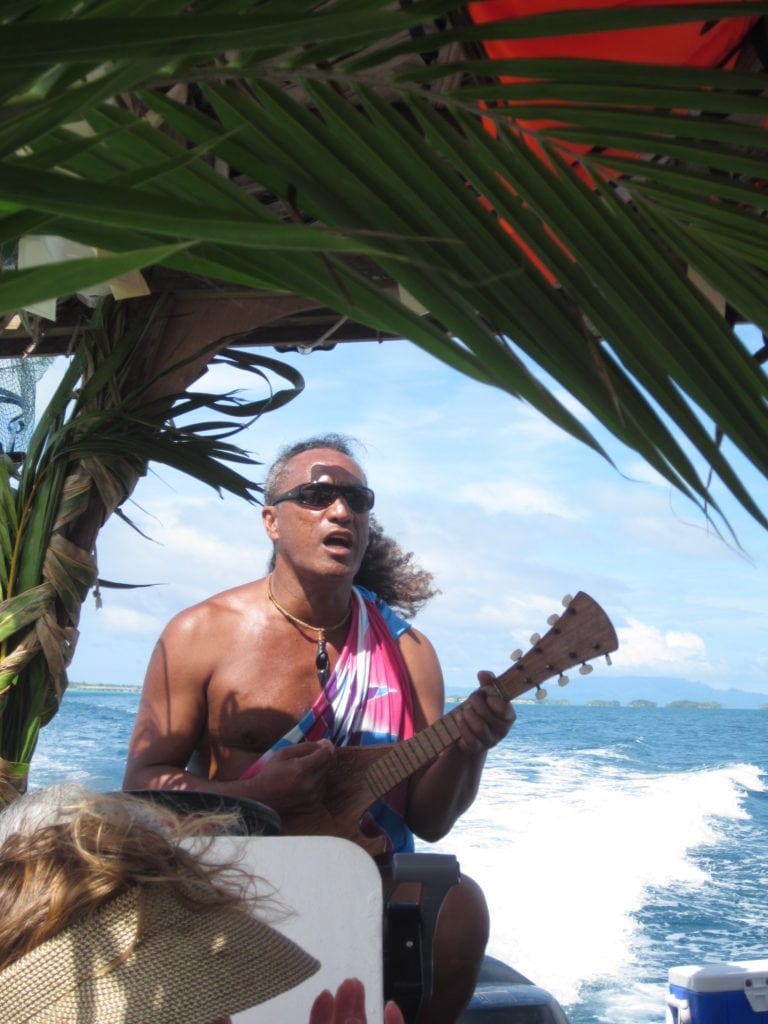
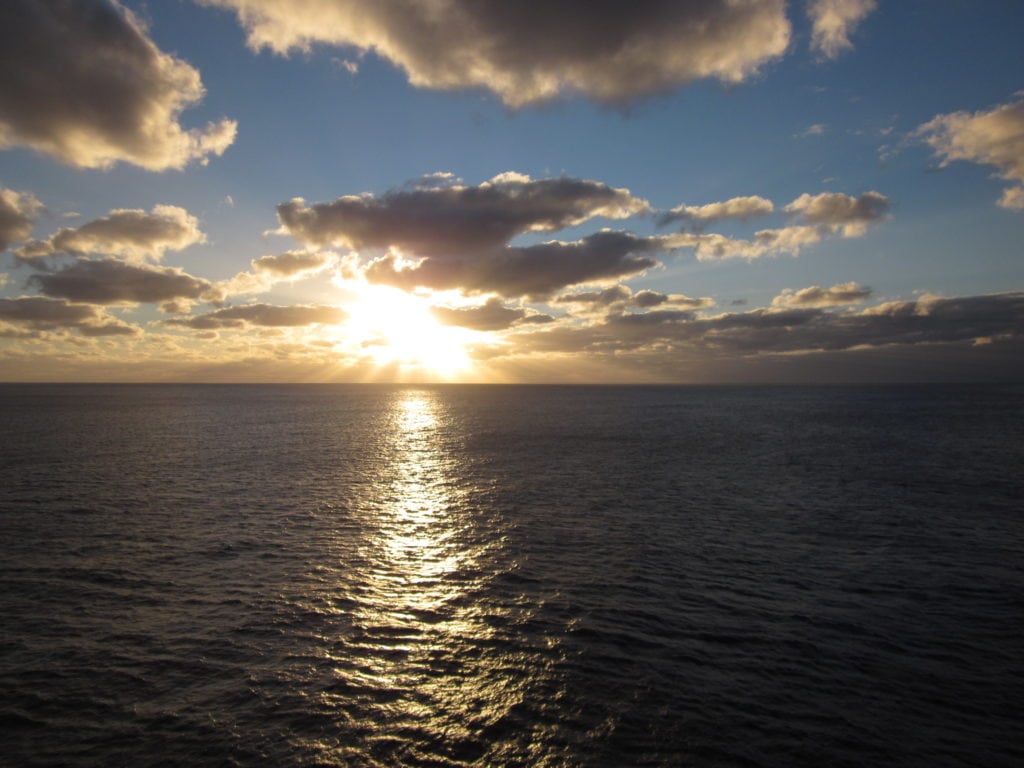
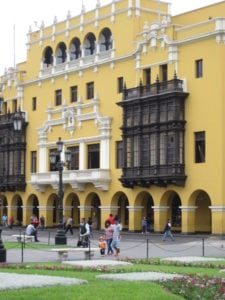
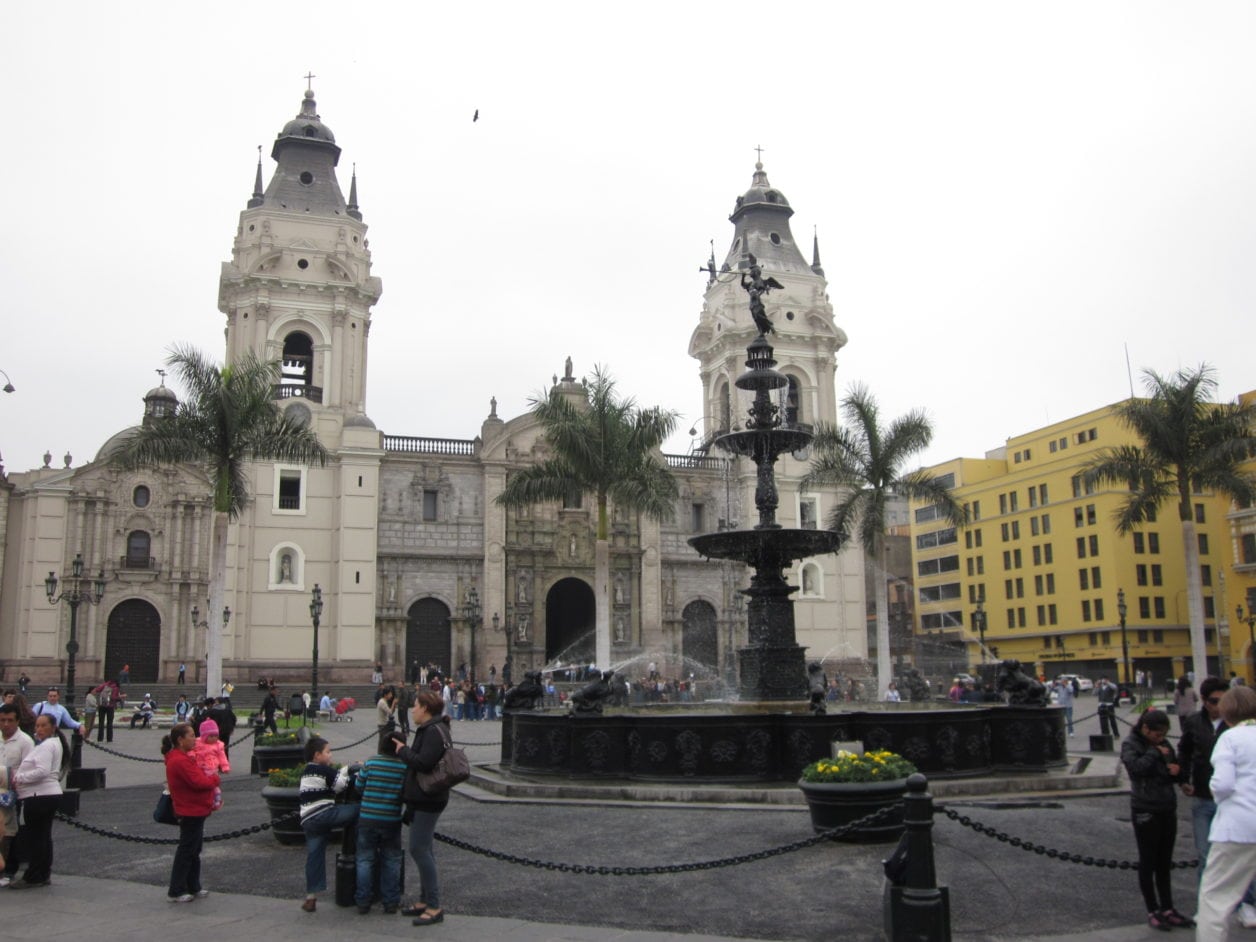
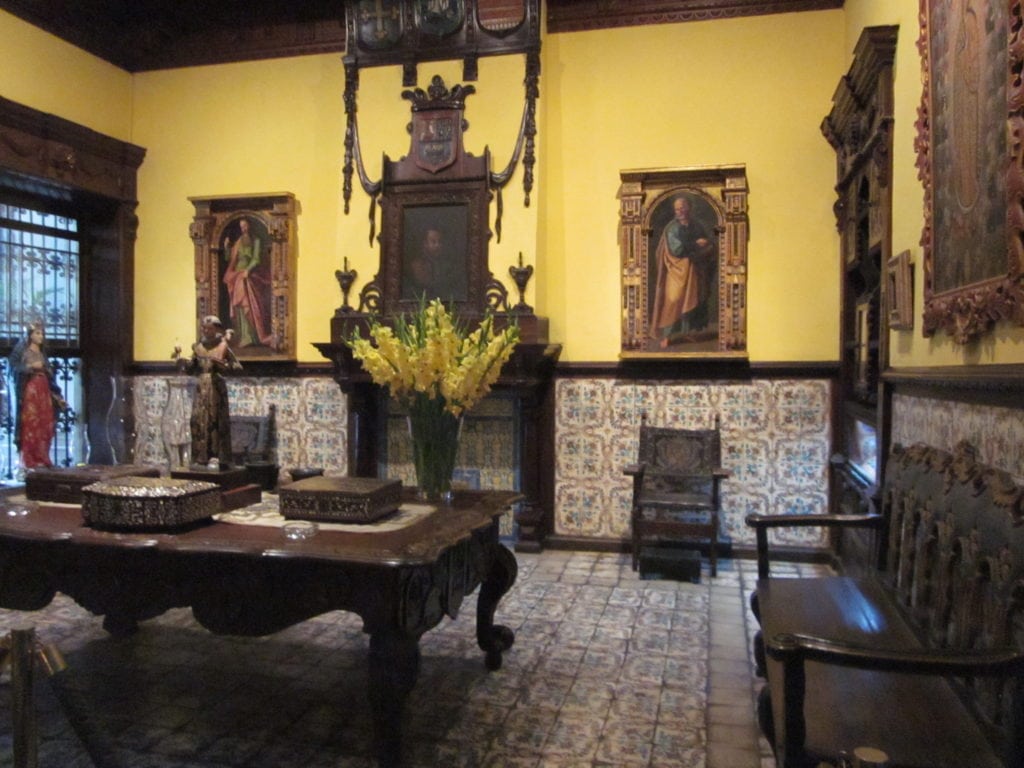
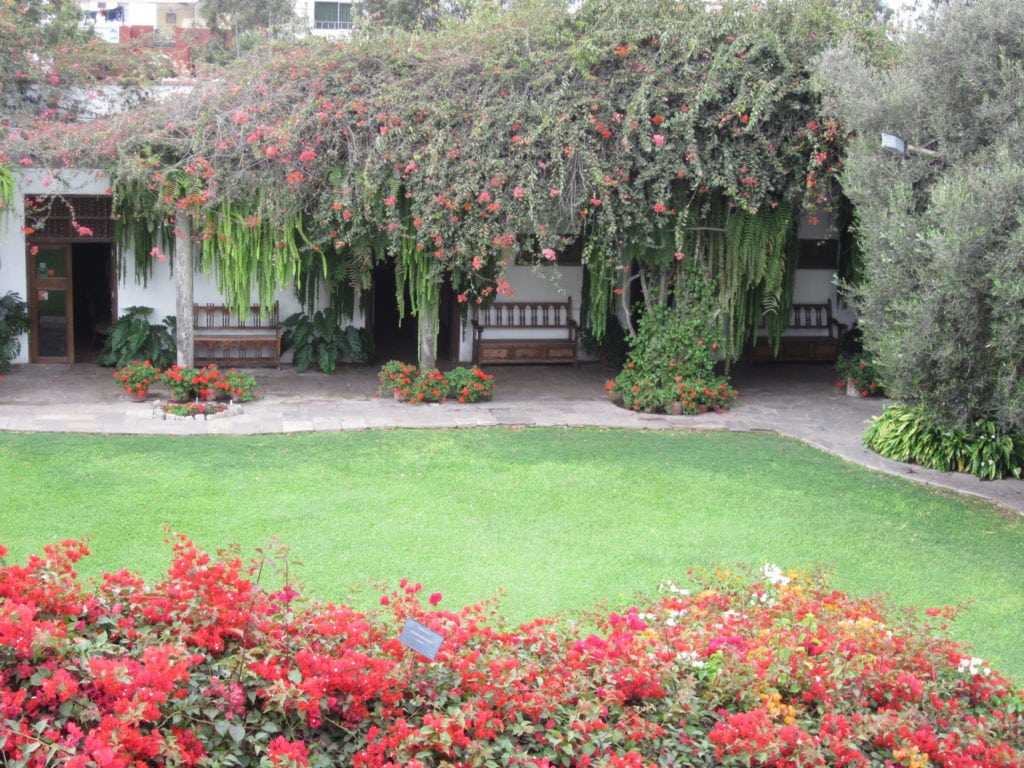
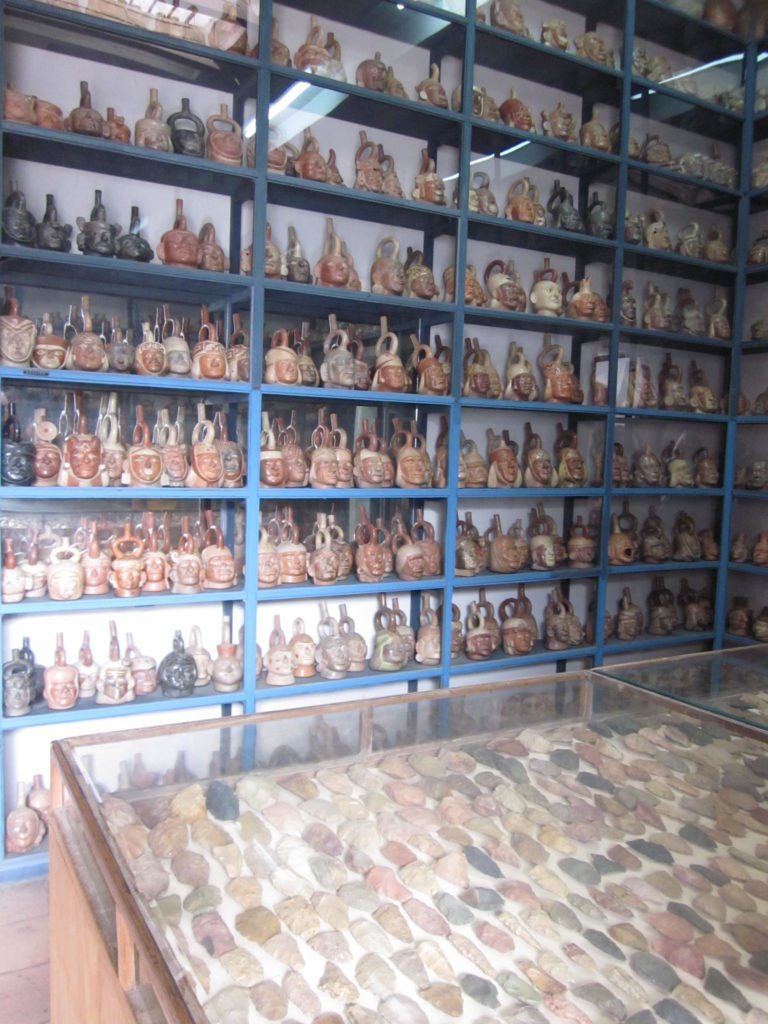
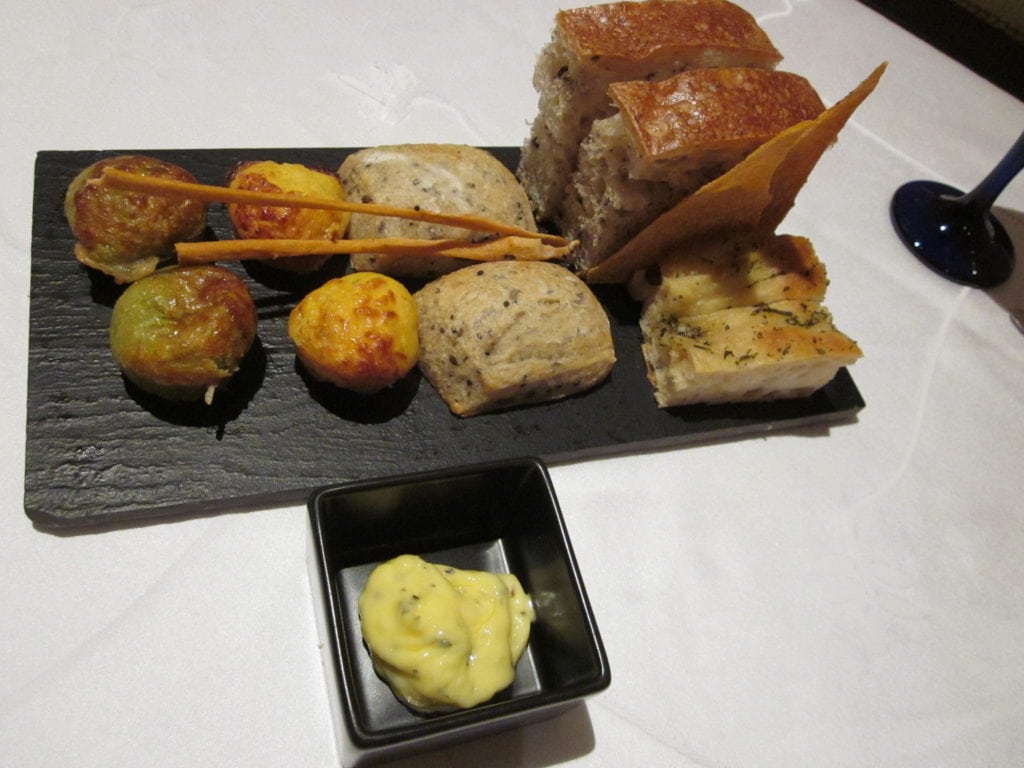
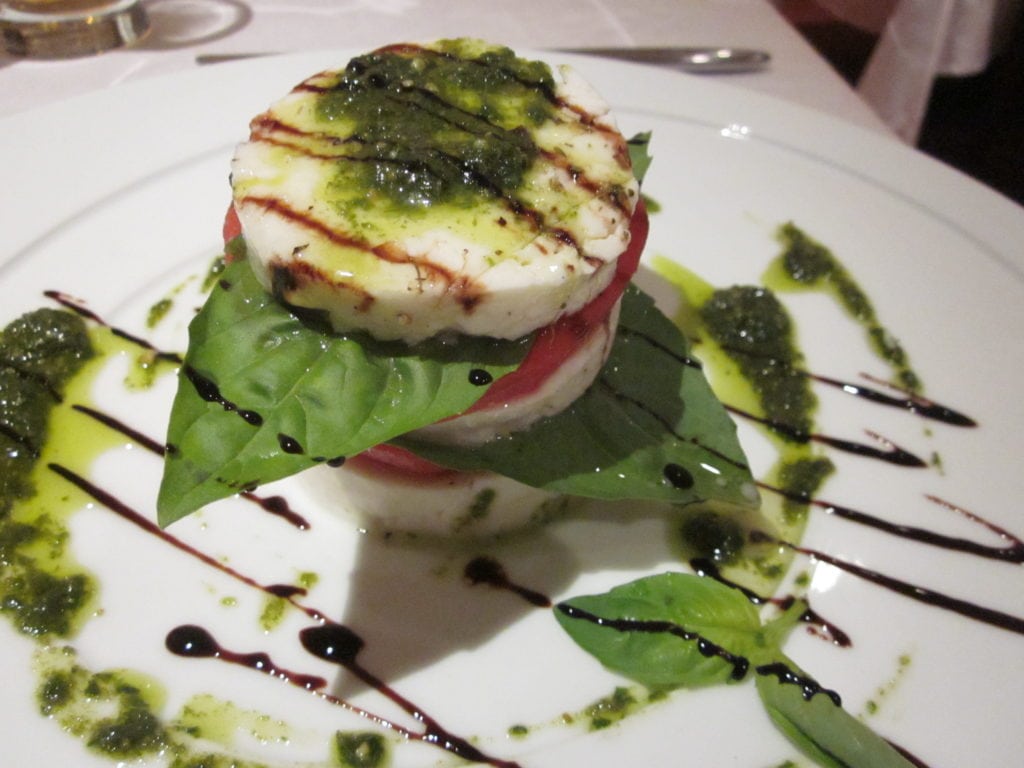
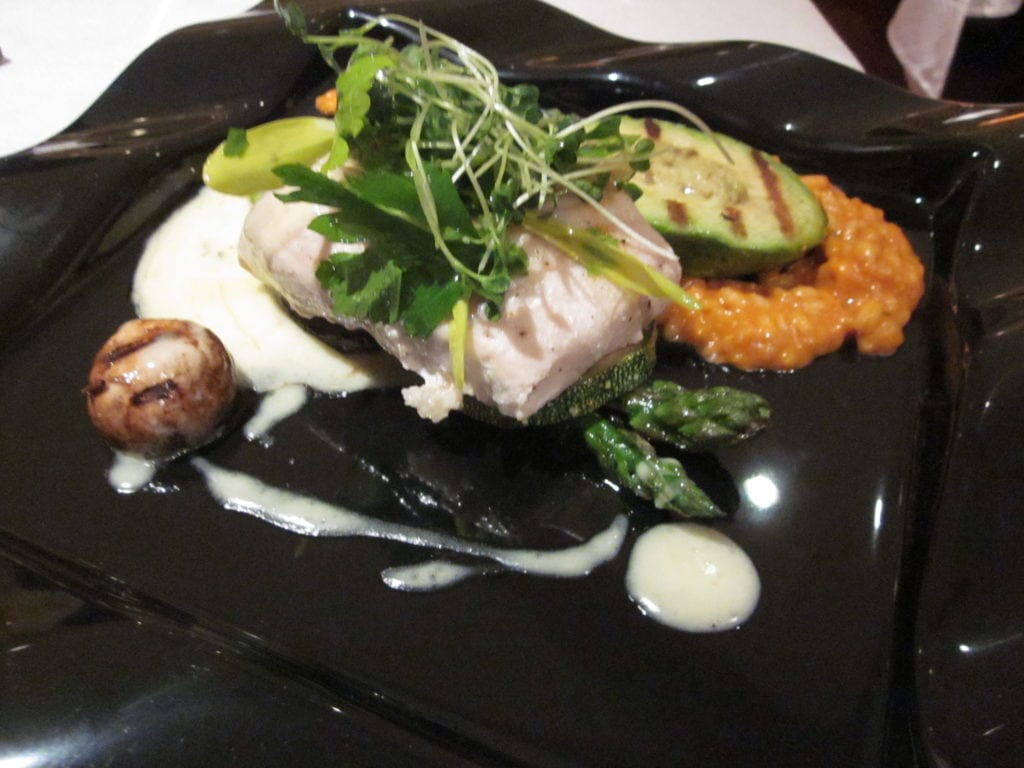
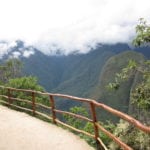
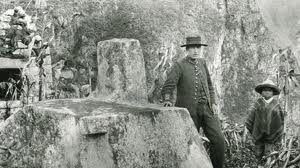
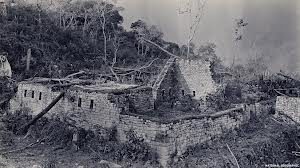
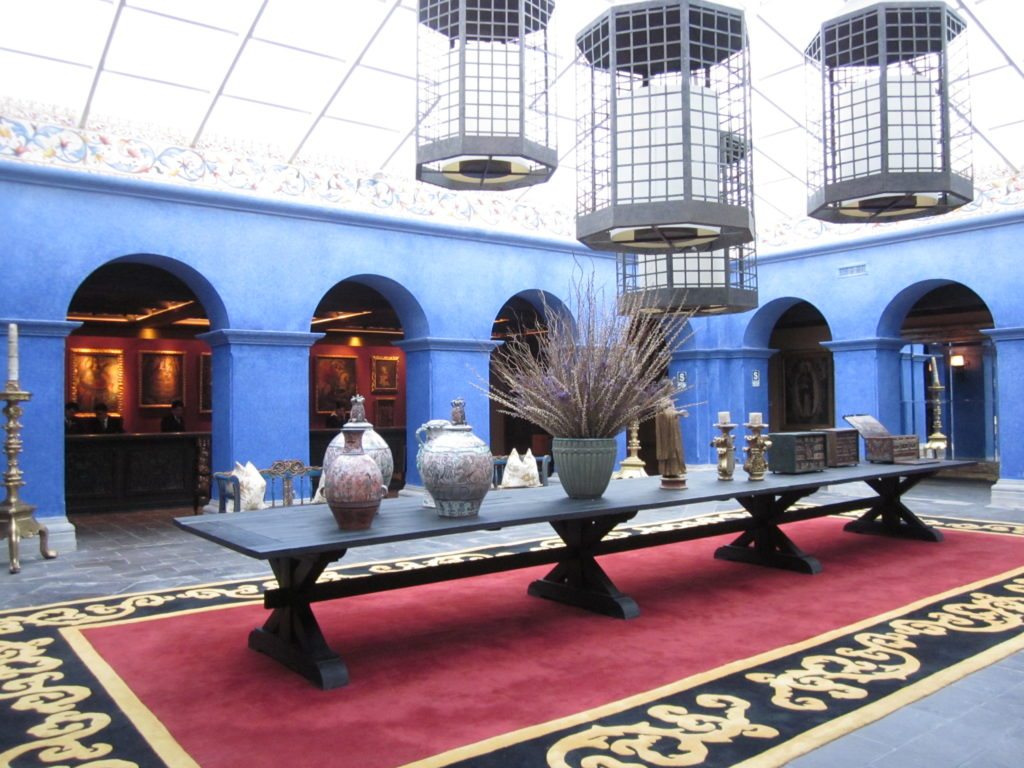
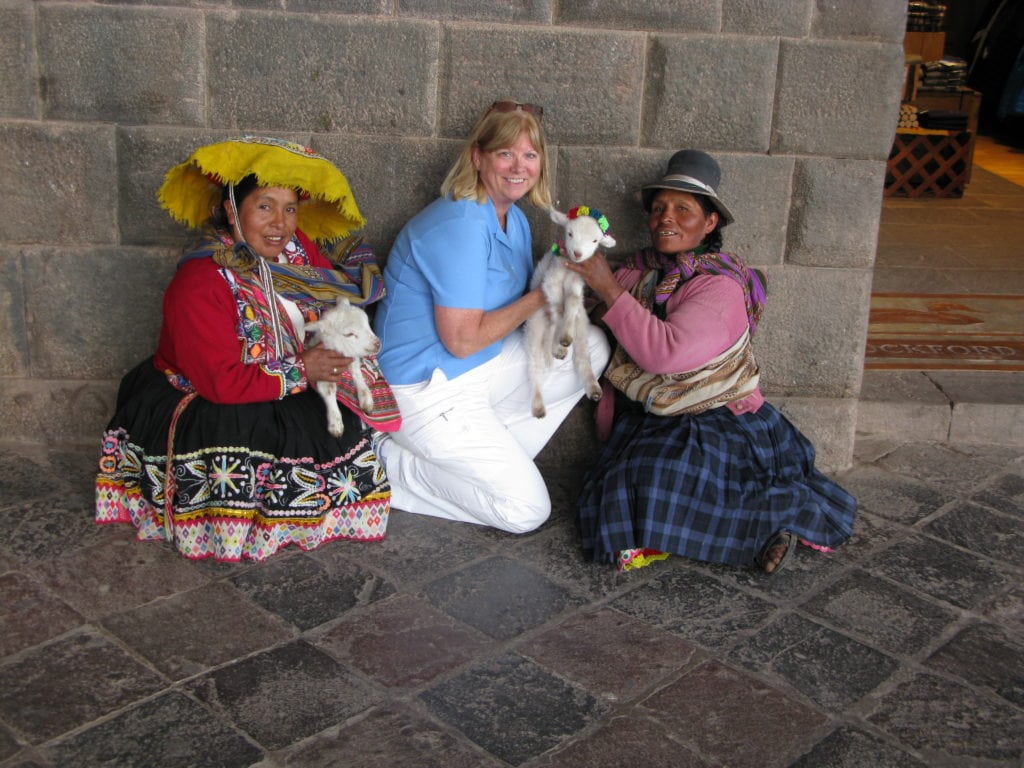
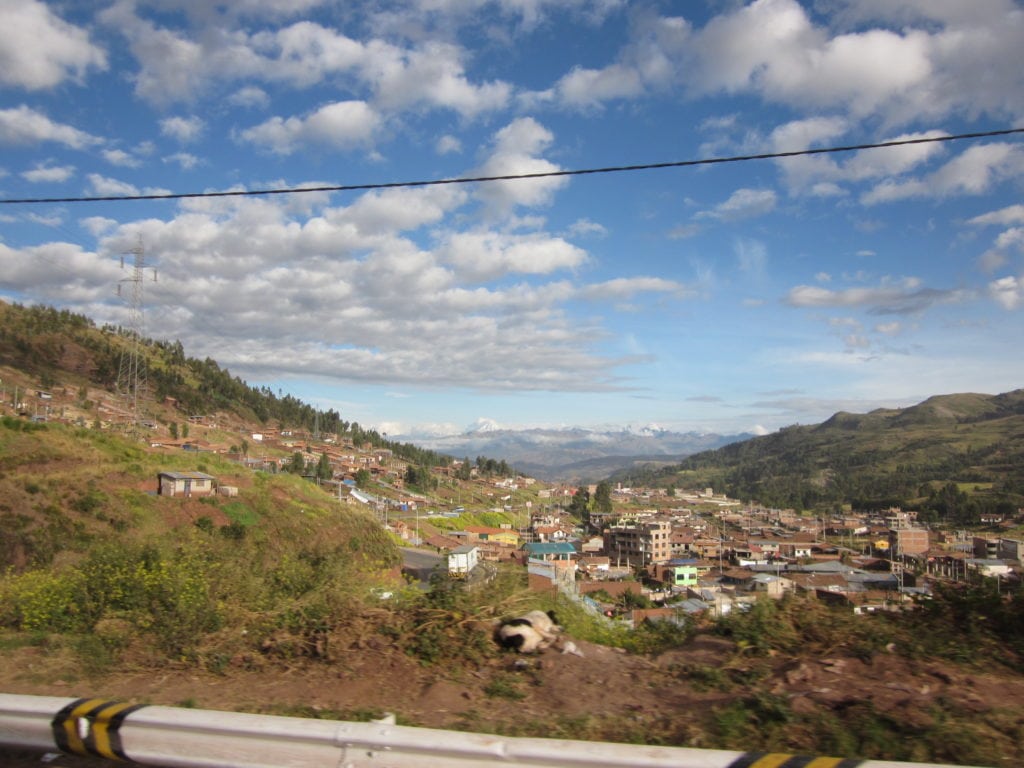
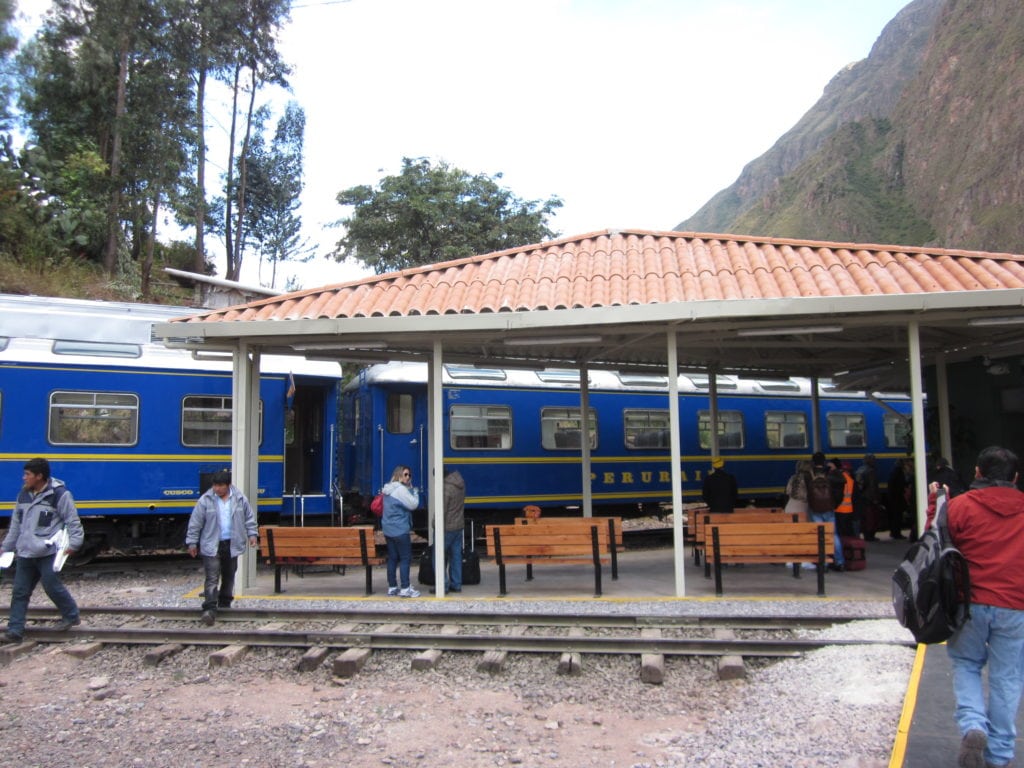

Hi there to every single one, it’s actually a nice for me
to pay a visit this site, it contains useful Information.
Hi there! I simply want to give an enormous thumbs up for the
great information you